-
The Secret Gardens of Historic Monterey
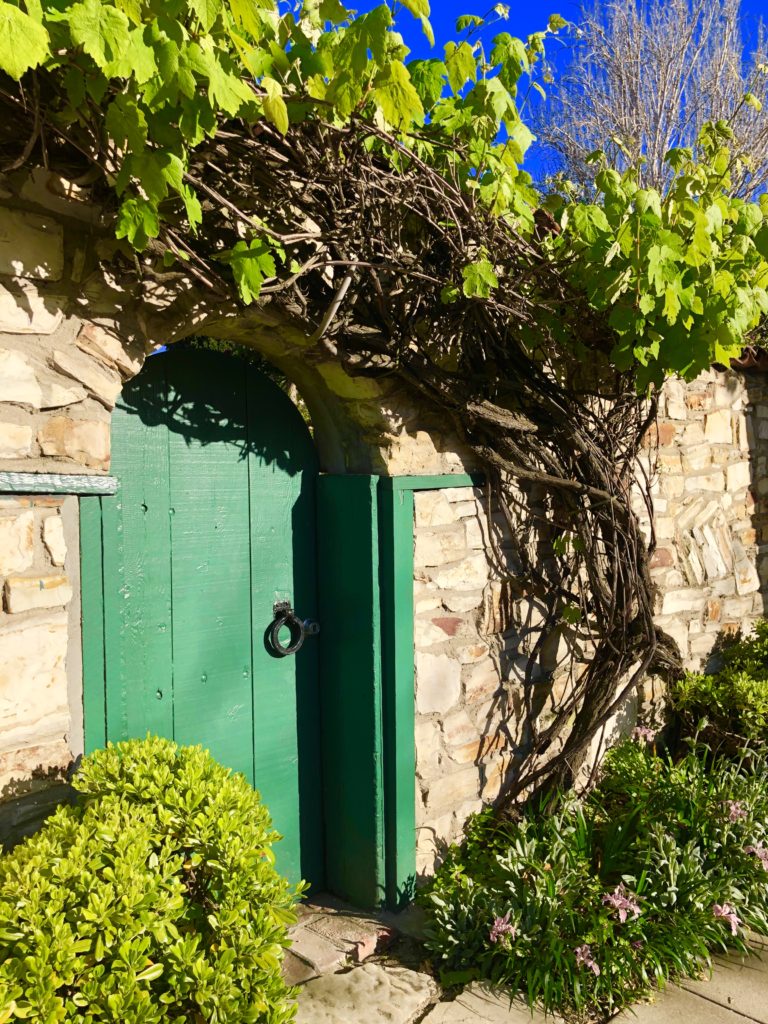
Often hidden behind a wall or a gate, secret gardens denote mystery, privacy, and solitude. Secret gardens offer solace; a place to sit or walk and contemplate. They give you permission to be inspired, to dream, and to be at peace.
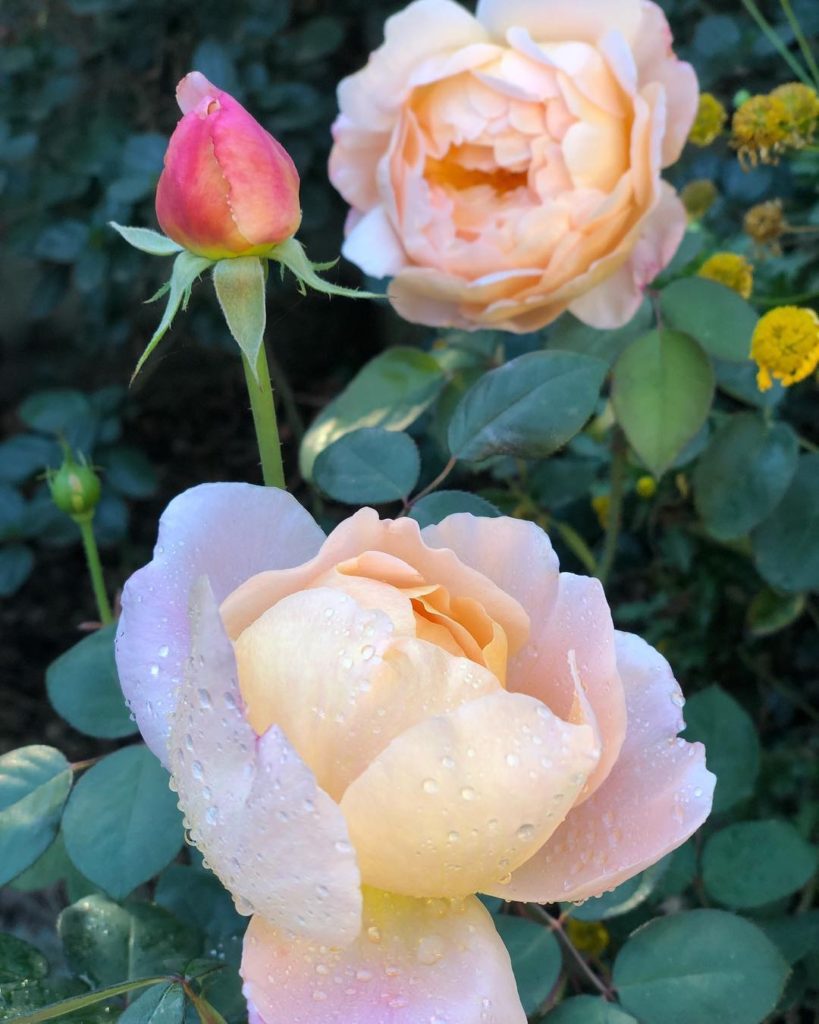
My own garden has its secrets: I love to share them with friends who come to enjoy the peaceful solitude of my farm. The roses that defy being eaten by deer, puzzling my neighbors. The “April in Paris” sweet peas that have self-sown and freely proliferate. The mesmerizing scent of the white, star-flowered jasmine that grows just outside my bedroom, perfuming the night air.
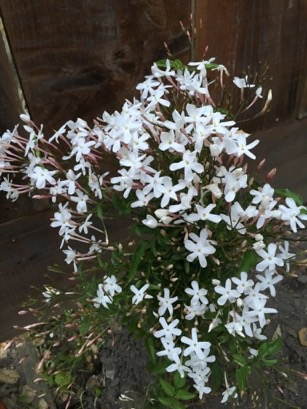
Monterey has some of the most fascinating and delightful secret gardens ever. What makes these gardens so special is that they are located on the grounds of some of the most historic properties in Monterey. The secret gardens here are all completely unique, enticing you with beautiful colors and heavenly scents.
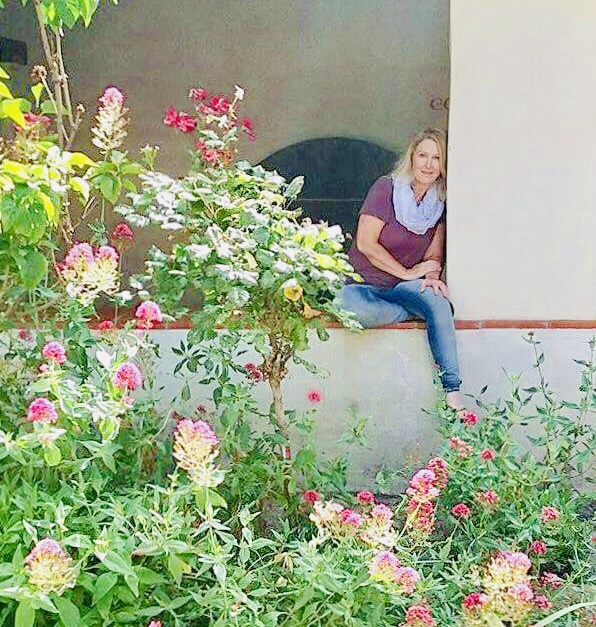
1. The Larkin Garden is located at 510 Calle Principal at the intersection with Jefferson. Thomas Larkin built the two-story mud adobe brick home during Mexican rule of California. An American merchant, he became the only United States Consul to Alta California under Mexican rule.
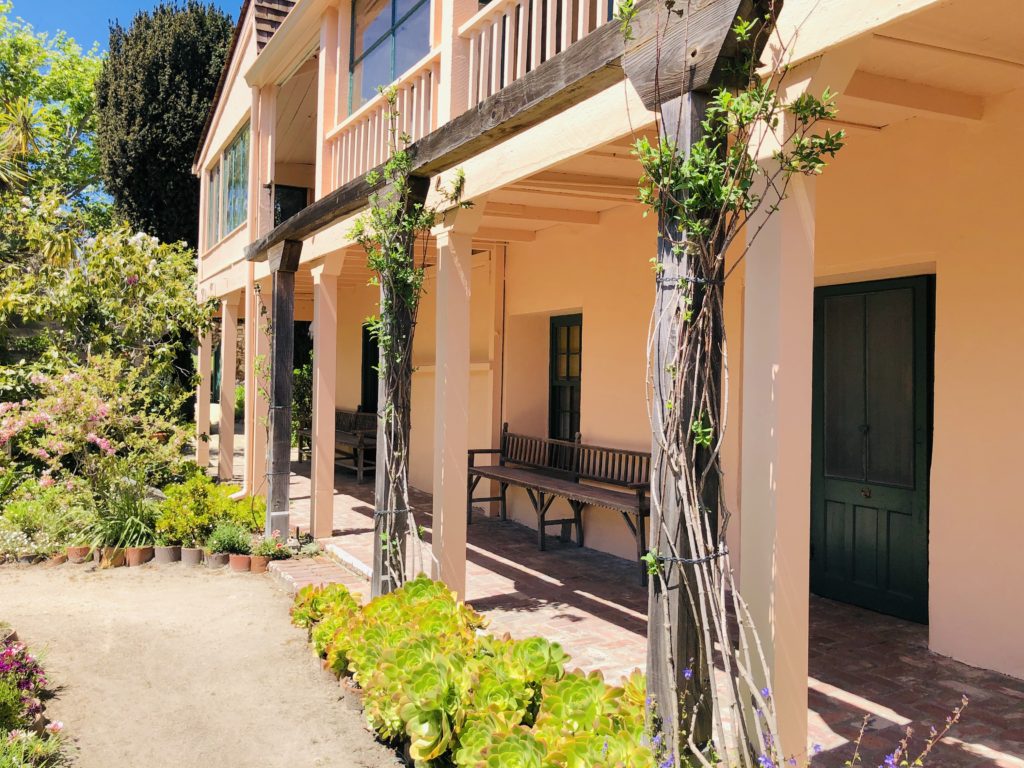
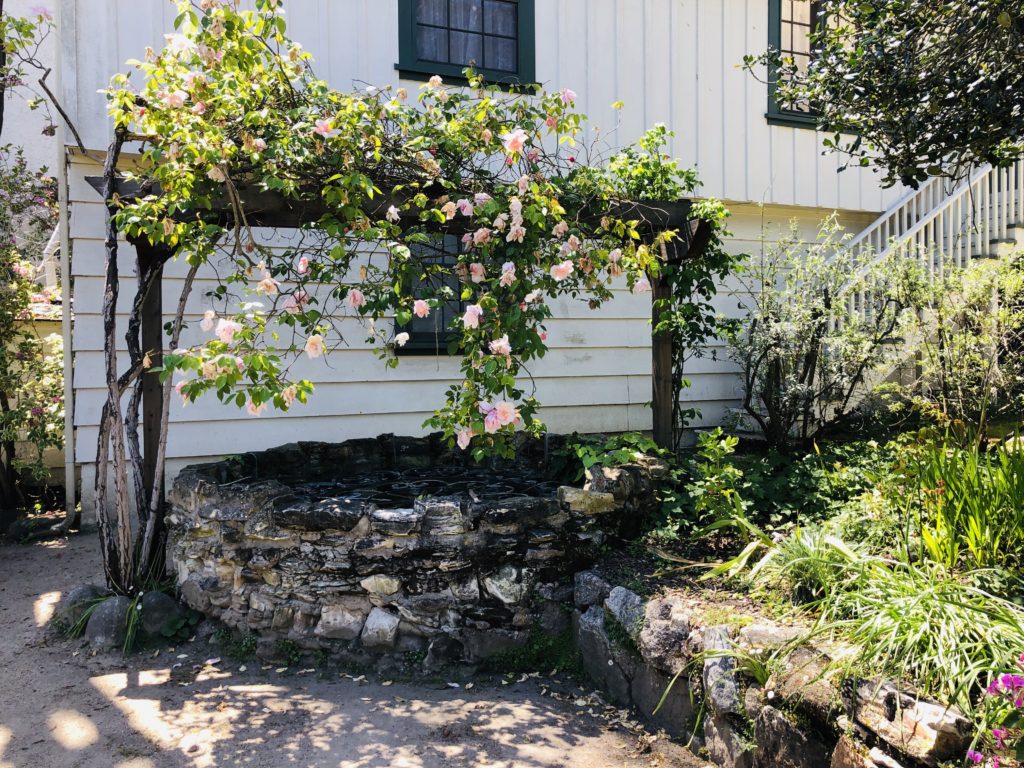
A wishing well covered with climbing roses draws your eye at the Larkin secret garden. 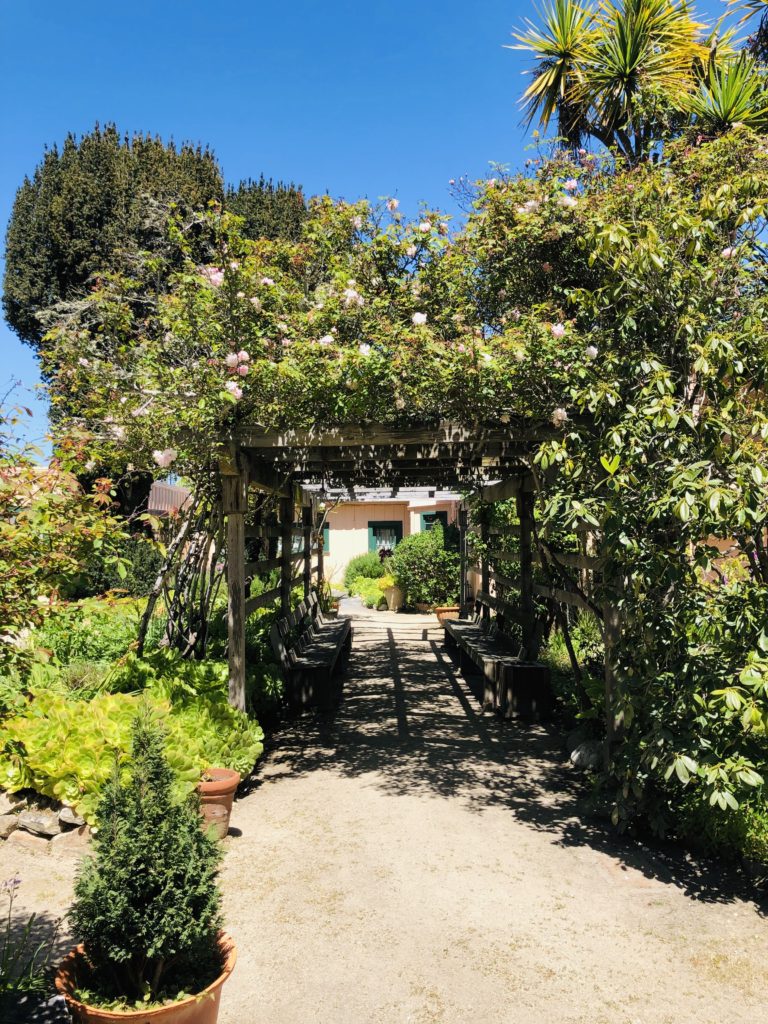
2. The Memory Garden, located at 20 Custom House Plaza in Monterey, was designed by Frederick Law Olmstead, Jr. in 1927. It has an 8-foot high adobe wall and three gates. Inside the garden is a 15-foot diameter fountain surrounded by lovely magnolia trees.
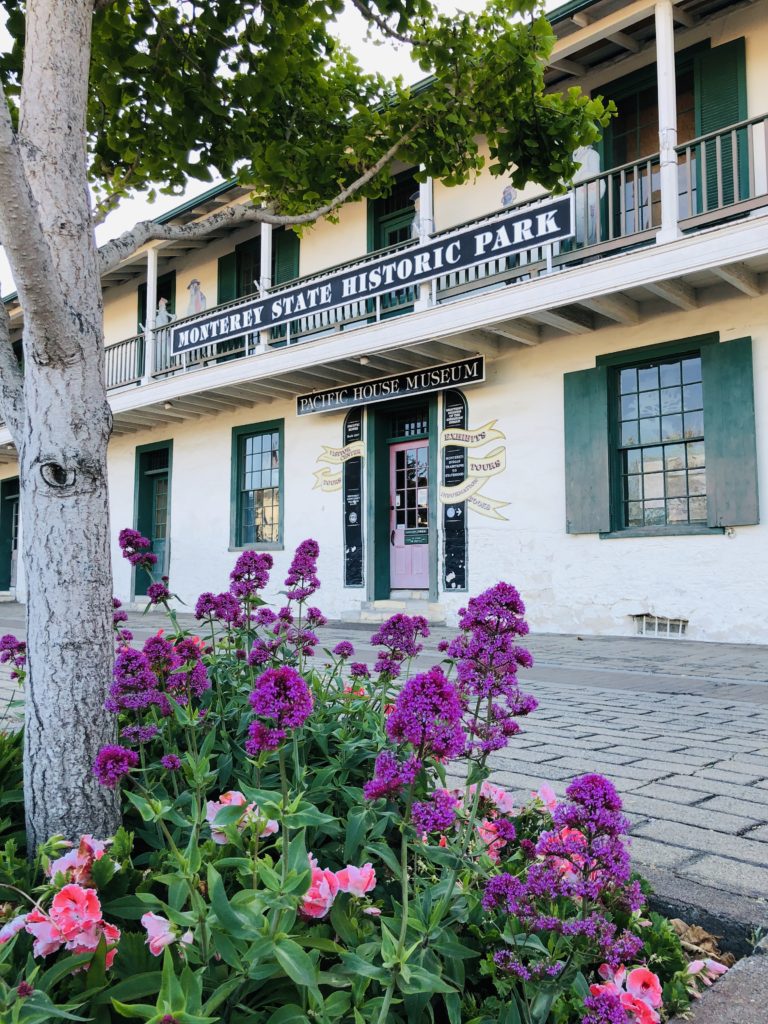
The Memory Garden lies behind the Monterey State Historic Park office and Pacific House Museum. 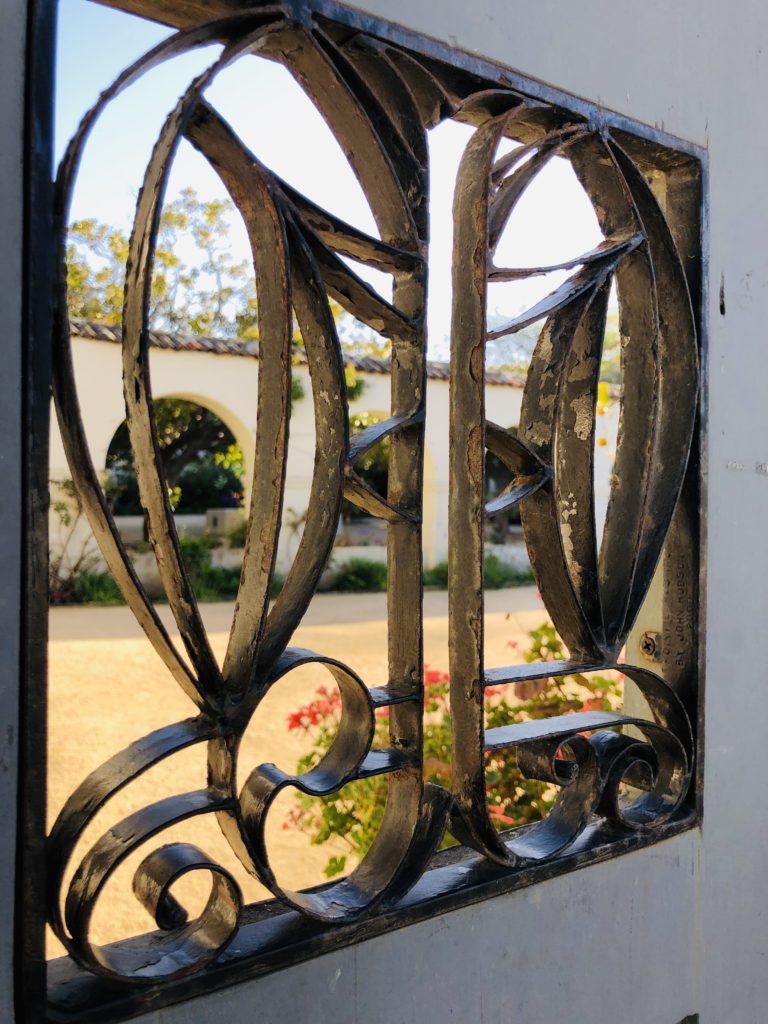
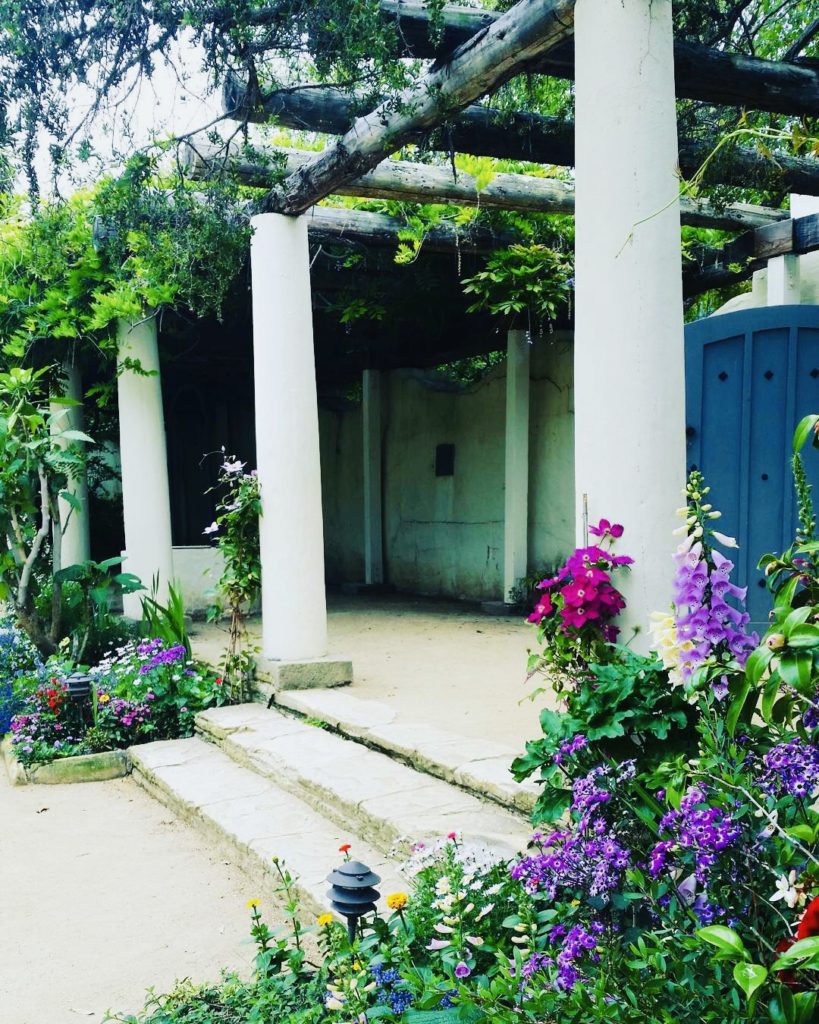
3. The Casa del Oro Garden is at the corner of Pacific and Scott Streets just across from the First Theatre. This is the only garden not enclosed by a wall.
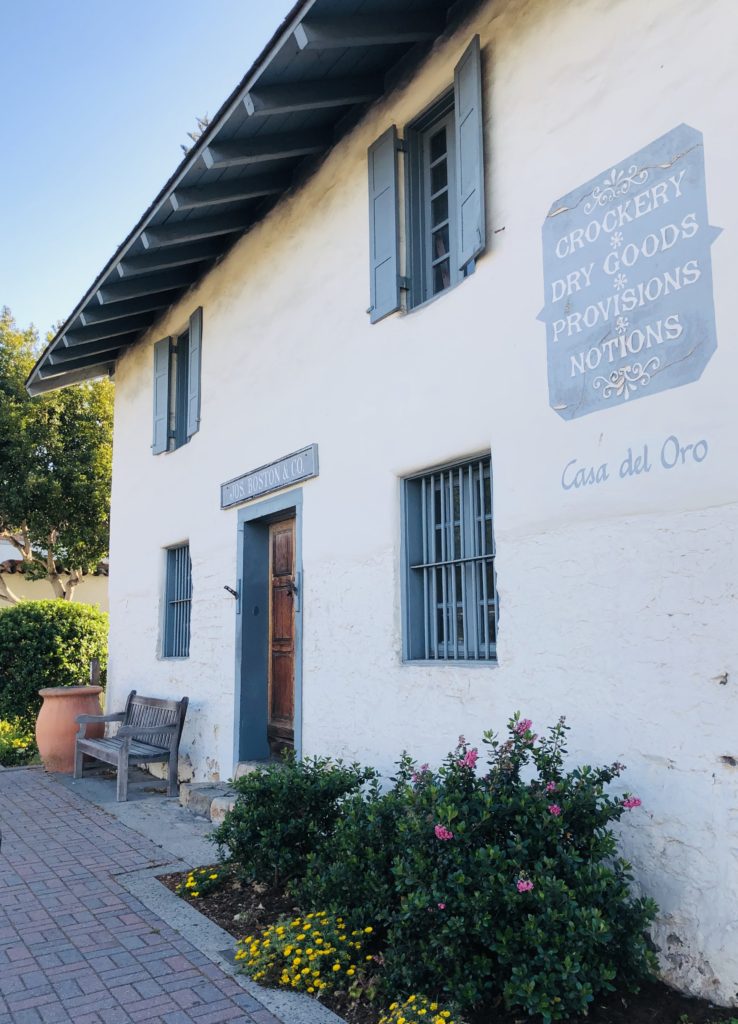
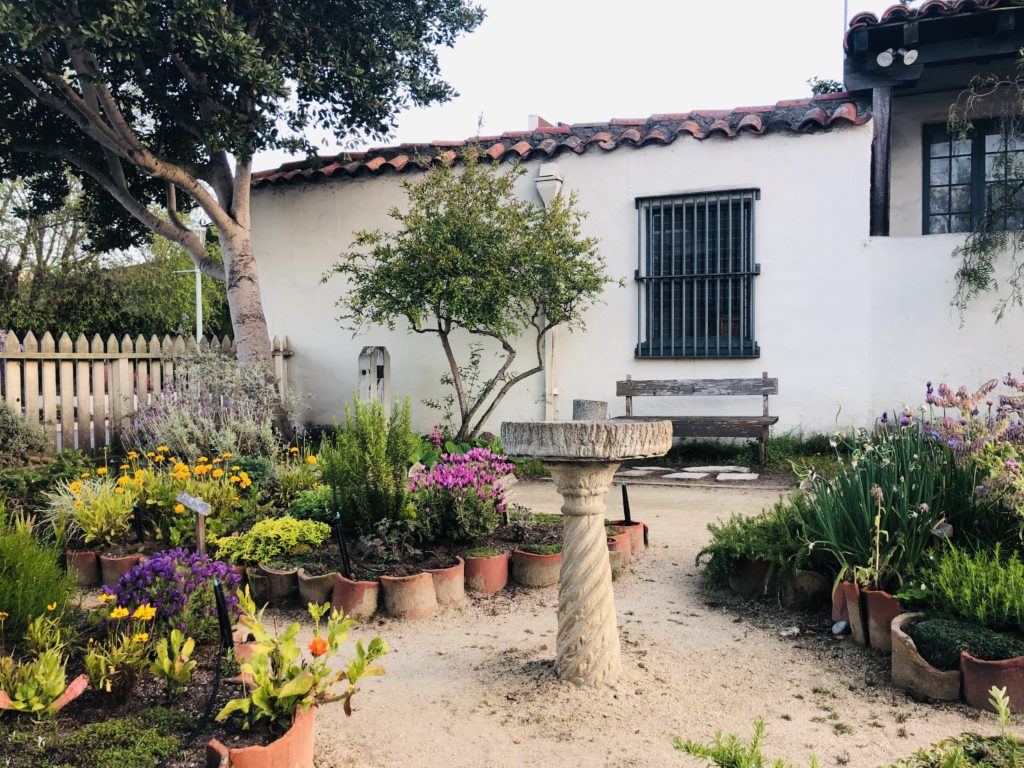
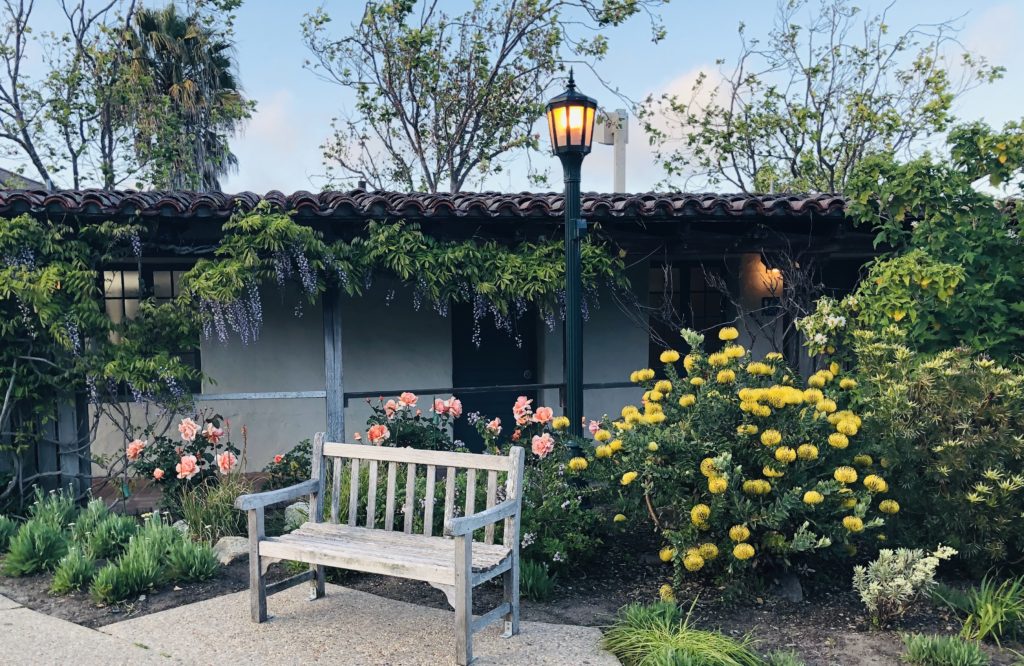
4. The Stevenson Garden is named for the boarding house where Robert Louis Stevenson stayed in 1879 while courting his future wife, Fanny Osbourne. He stayed on the second floor of the French Hotel at 530 Houston Street and worked on essays as well as ideas for future works, including Treasure Island.
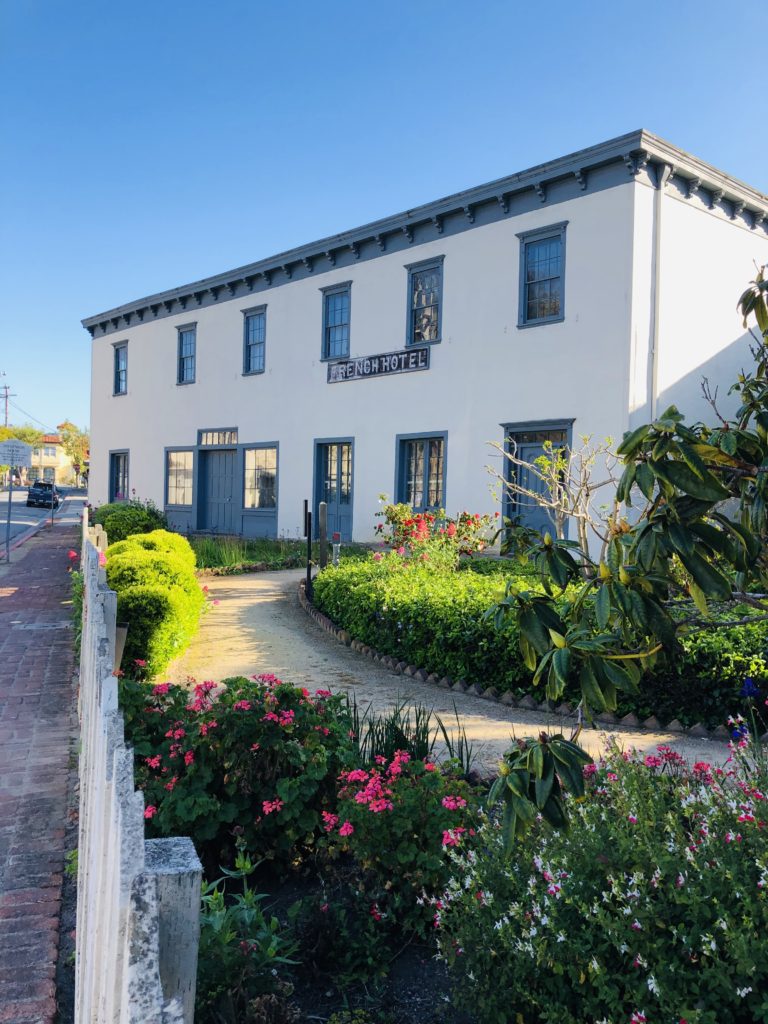
In front, a white picket fence frames a bevy of blooms. Behind the old French Hotel is the secret garden, featuring meandering pathways surrounded by high fencing and featuring an ancient gate at the rear.
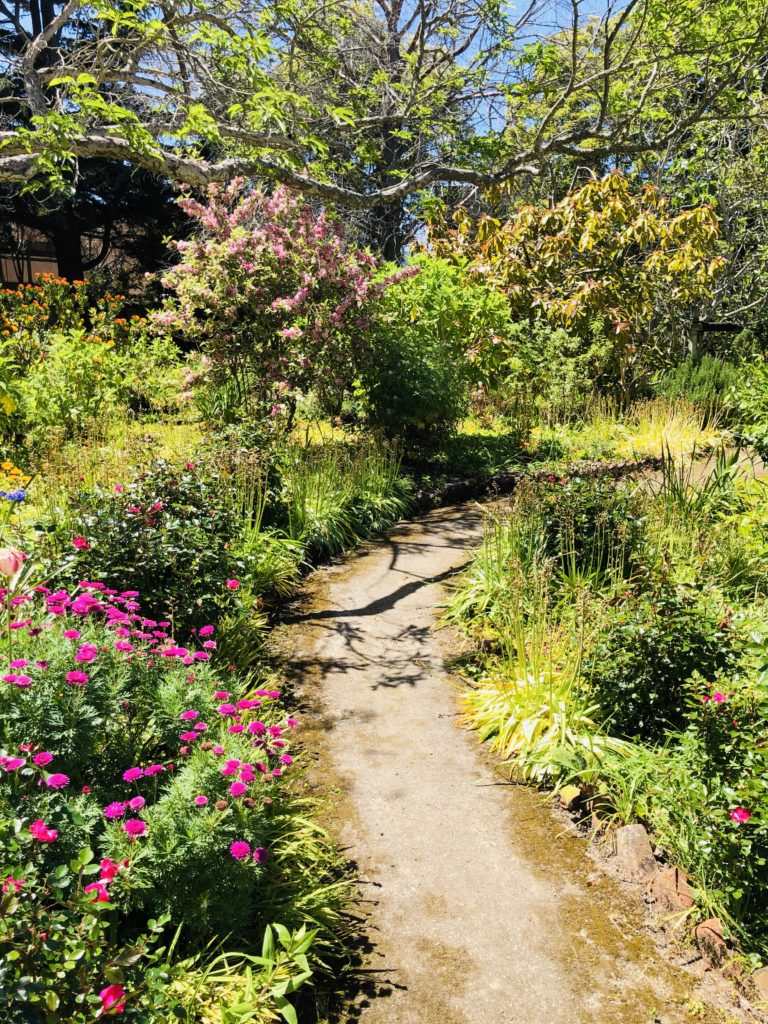
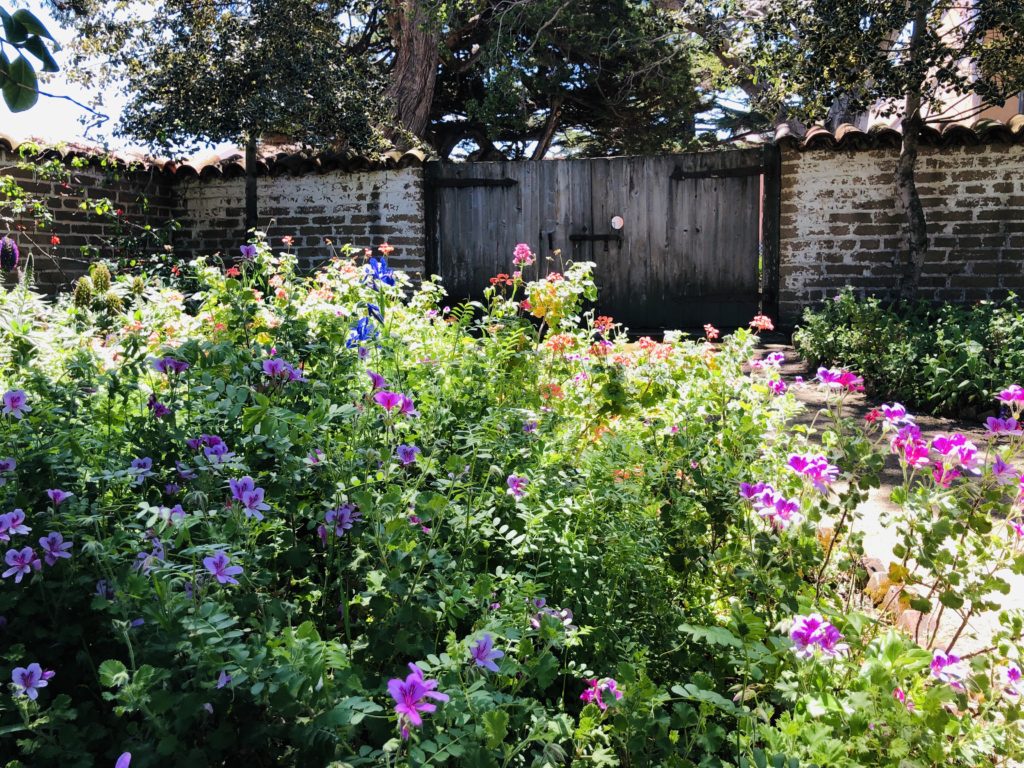
5. The Casa Soberanes Garden, located at the corner of Pacific and Del Monte, features abalone shells and wine bottles as edgings for the flowerbeds in its secret garden.
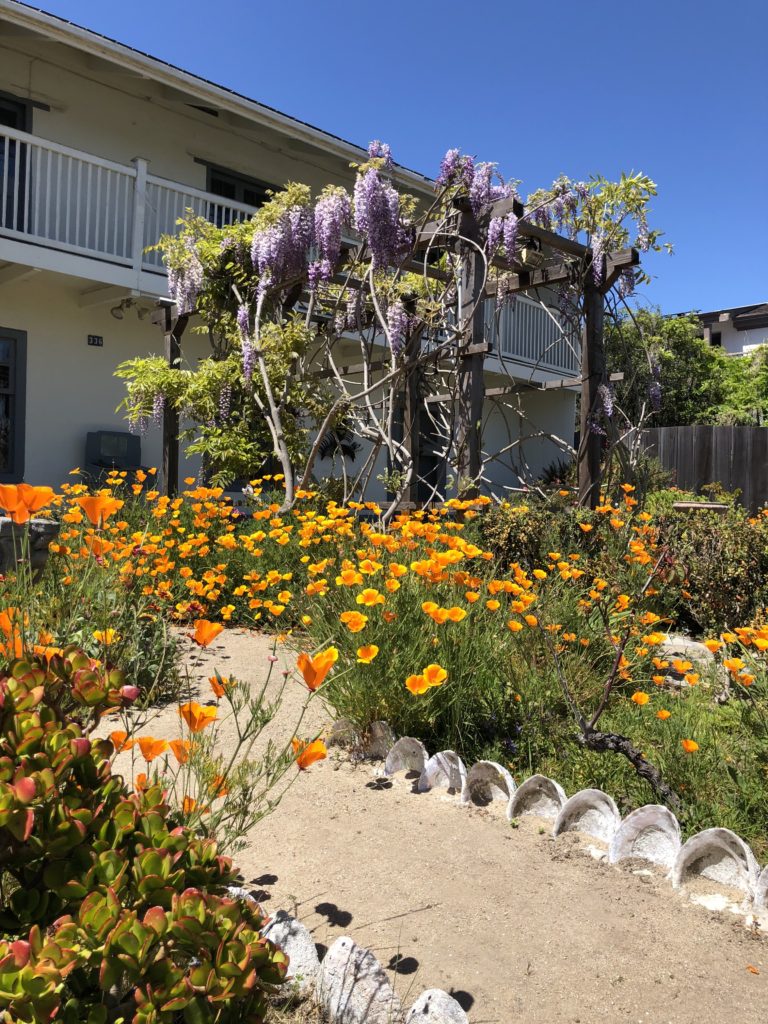
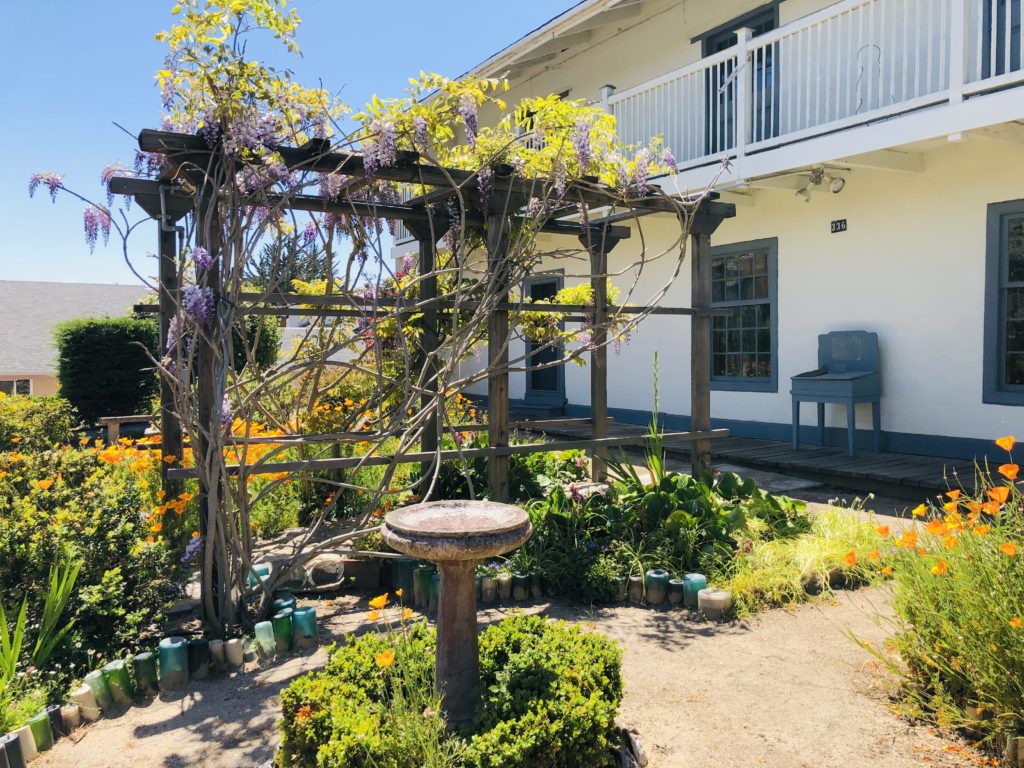
6. The First Theatre Garden is located at the corner of Pacific and Scott Streets. Whale bones frame the entrance of the theatre building, vestiges of Monterey’s whaling history.
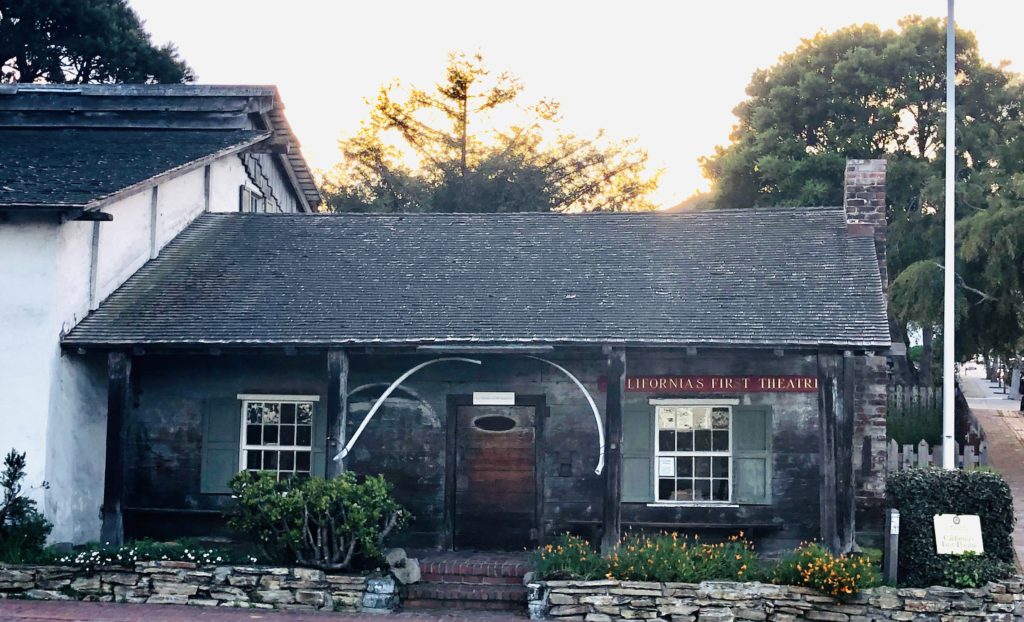
California’s first theater was built in 1847 by Jack Swan for use as a lodging house and tavern for sailors. It became a theatre in 1850. 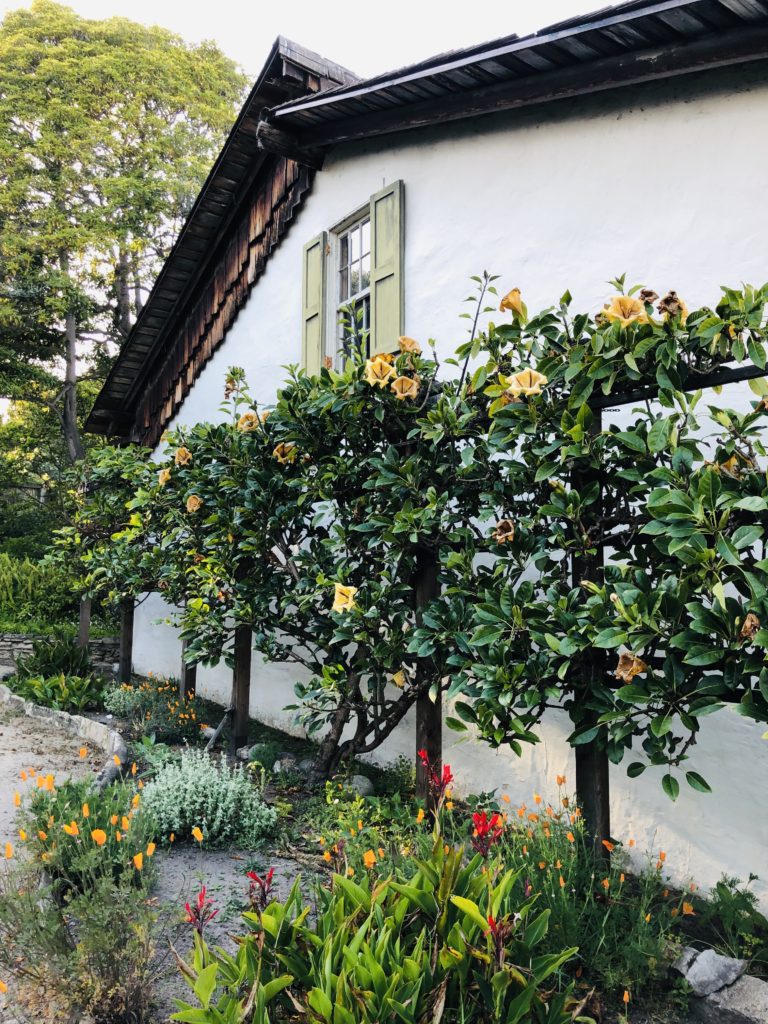
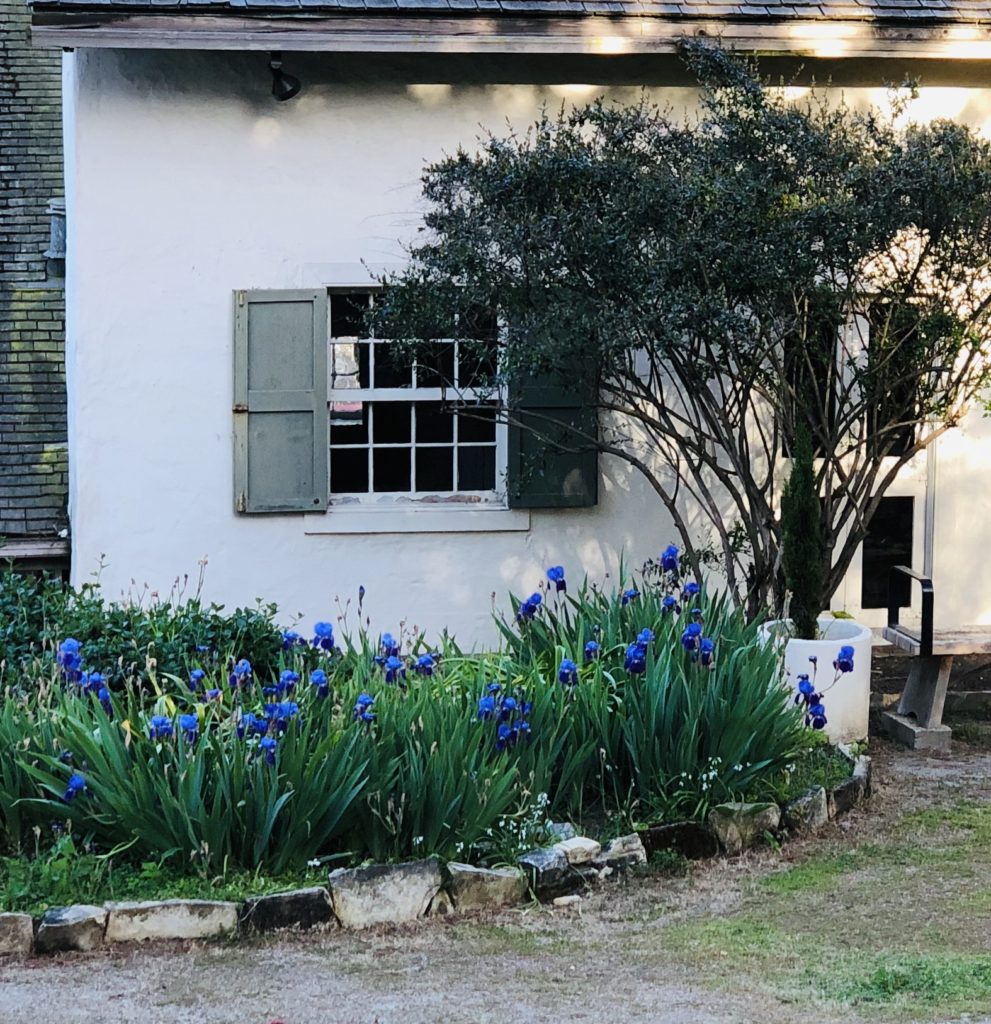
7. Hidden behind a very old wall at the corner of Polk and Munras is the Cooper Molera Adobe secret garden and orchard, Built in 1827, the property is a National Trust Historic Site. What fun to meander among the rustic elegance of the only historic redwood barns within the city limits of Monterey and enjoy the charming and beautiful plants and flowers here.
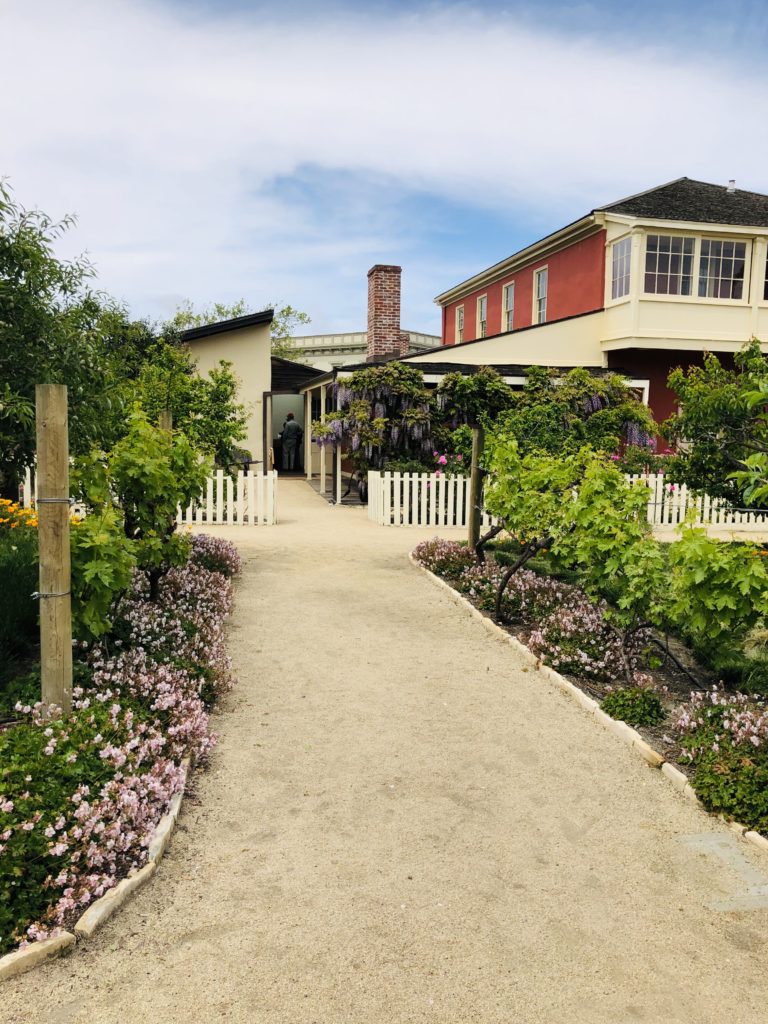
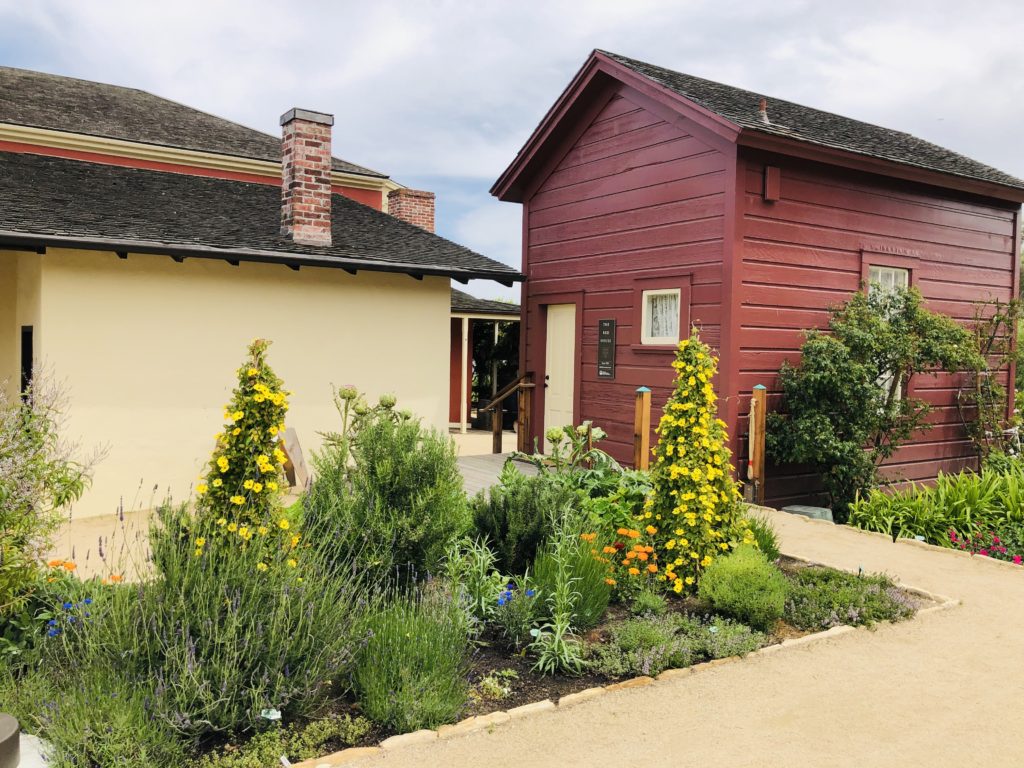
The paths here are wide and easy to navigate throughout the beautiful flowerbeds and the orchard. 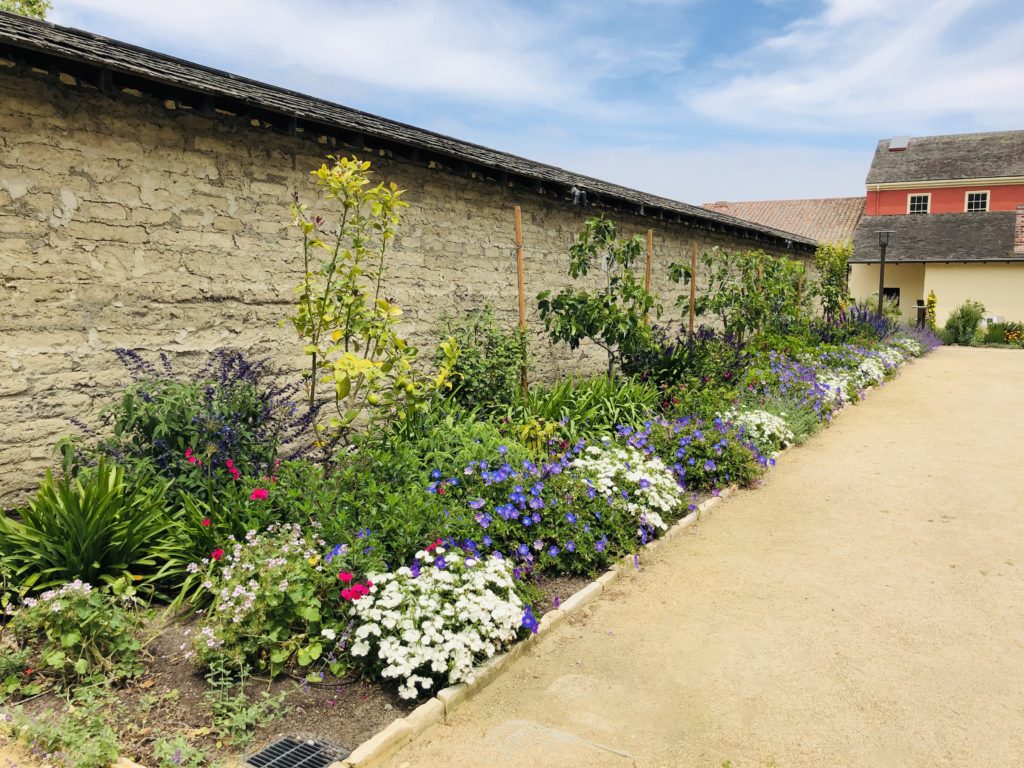
Hours: The Larkin, Memory, Casa del Oro, Stevenson, Casa Soberanes, and First Theatre gardens are open daily from 9 am-4 pm. For more information, see California State Parks. Hours for the Cooper Molera garden are Tuesday through Saturday: 11 am – 4 pm, and Sunday 11 am– 2:30 pm.
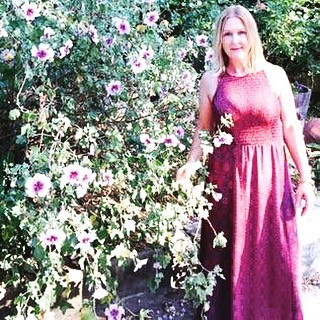
I hope you enjoyed this post and are able to visit the secret gardens of Monterey. Thank you for visiting my blog. Wishing you peace, love, happiness, and beautiful vistas!
-
Rabbit Romance: My Love Affair With Bunnies

Easter and springtime bring to mind baby chicks, eggs, and of course, bunnies. With their twitchy little noses, fluffy tails, and long, soft ears, rabbits are simply adorable. I have always loved them.

I grew up in a home where my father did not care for pets. Dad had already nixed my request for a kitten or puppy. It was only due to my Mom surreptitiously sneaking him into the backyard along with his rabbit hutch that I came to know and love Oliver. Oliver was a very fat, sweet rabbit, as brown as a bread crust and with feet as big as my hands. When Dad discovered my new pet, he was told that Oliver’s previous owner had departed for college and could no longer care for him. There was no taking him back. Wink wink.

My bunny Oliver. Oliver became my best friend. I would dress him up in baby doll bonnets and Daisy Duke cut-offs, feed him lettuce and carrots, and snuggle with him. I would ride around with him tucked safely inside a white flower-power basket on the front of my bicycle, which often drew astonished looks from folks we passed in the neighborhood.

My love of rabbits only grew with my love of reading about them. Beatrix Potter’s Tale of Peter Rabbit was a favorite of mine. I ended up naming one of my sons Peter; it may have been my adoration for Peter Rabbit. I loved that Peter Rabbit was the naughty one in the family, sneaking into Mr. McGregor’s garden and binging on veggies. After his misadventures, his siblings, Flopsy, Mopsy, and Cottontail get fresh bread and blackberry jam but poor Peter gets only chamomile tea and is put to bed. Poor Peter!
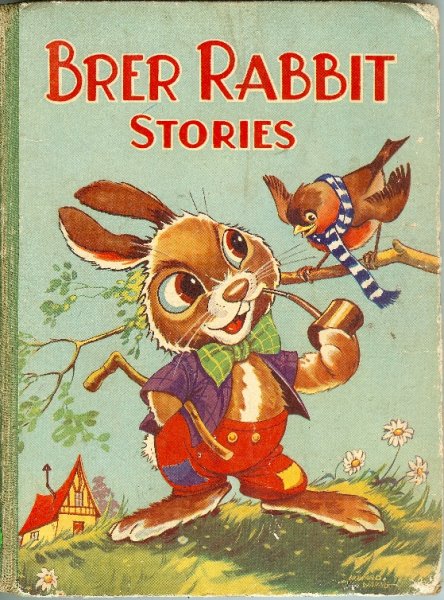
Brer Rabbit, created by Joel Chandler Harris, lived in a briar patch and was always one-upping the naughty Brer Fox. I have always admired him because he was resourceful and survived by his wits to escape capture. He was a tricky trickster!

The Velveteen Rabbit, by Margery Williams, is a dear and lovely book I am besotted with. Is there anyone that does not love this classic quote?
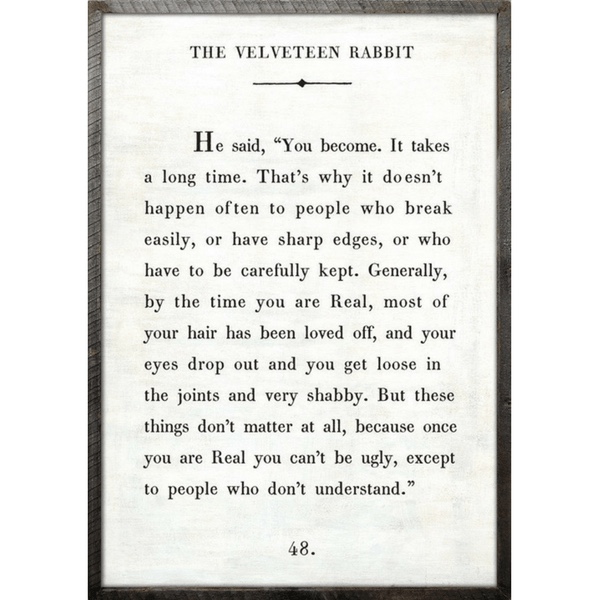

Thumper, the bunny in Bambi always reminded me “If you can’t say something nice, don’t say anything at all.” A good life lesson that I need to abide by.
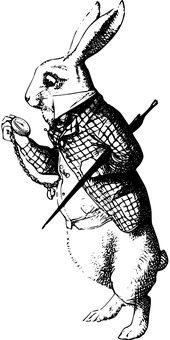
The White Rabbit in Alice and Wonderland always fascinated me, running around helter-skelter with his pocket watch. There was also the March hare who was obsessed with having tea. Never a dull moment for the bunnies in Wonderland!
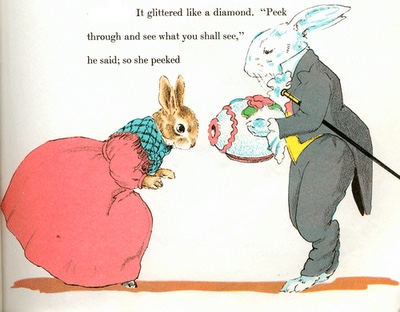
The Country Bunny and the Little Gold Shoes by Dubose Heyward tempted me with the most magical fairy tale adventures.
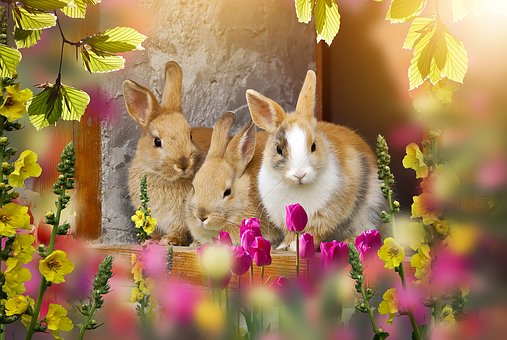
Do you have any favorite rabbits or rabbit stories? If so, I would love to hear about them. Thank you for visiting my blog. Wishing you peace, love, happiness, and a beautiful Easter!
-
Whale Watching & More at Fisherman’s Wharf
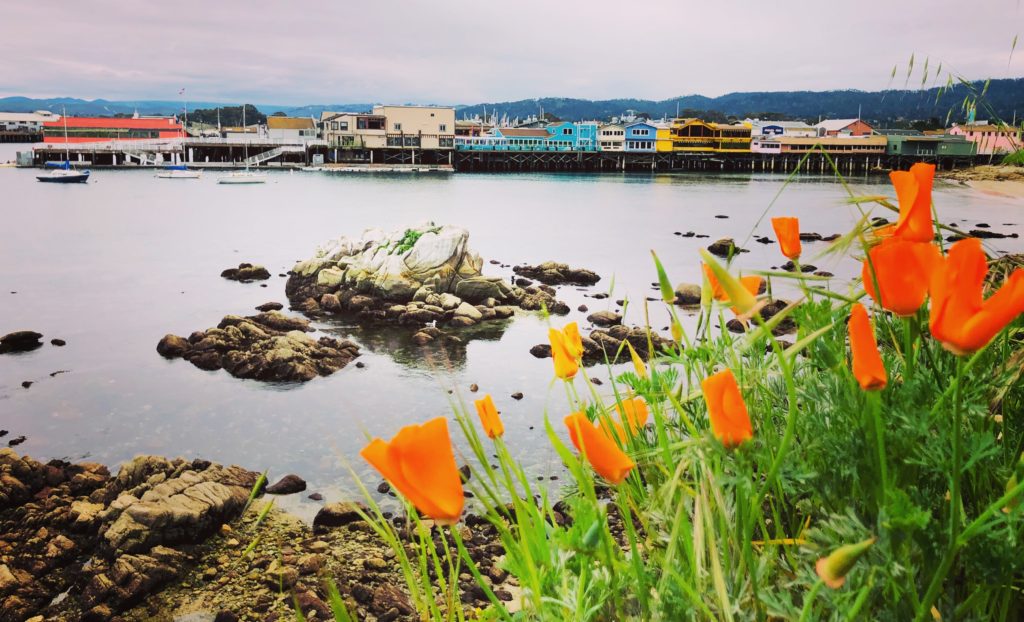 Fisherman’s Wharf in Monterey is busy, busy, busy. The minute you step foot here, the sounds, smells and sights will inundate you. On the surface, Fisherman’s Wharf may seem like a typical tourist trap, with shops hawking the usual souvenirs, t-shirts and knick-knacks. But don’t let that stop you from exploring this charming venue. Fisherman’s Wharf has so much more to offer. It is full of history, beauty, and adventure, a must-see when visiting Monterey.
Fisherman’s Wharf in Monterey is busy, busy, busy. The minute you step foot here, the sounds, smells and sights will inundate you. On the surface, Fisherman’s Wharf may seem like a typical tourist trap, with shops hawking the usual souvenirs, t-shirts and knick-knacks. But don’t let that stop you from exploring this charming venue. Fisherman’s Wharf has so much more to offer. It is full of history, beauty, and adventure, a must-see when visiting Monterey.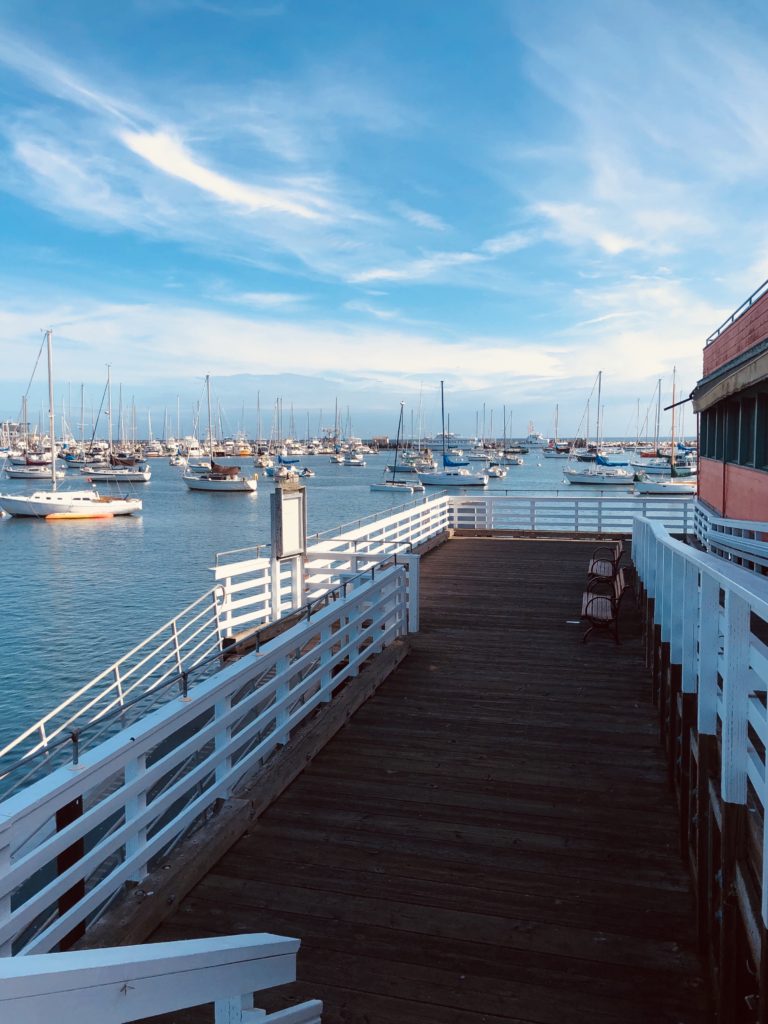
Fisherman’s Wharf has a long and colorful history. In 1602 a Spanish nobleman named Conde de Monterey sent a mariner to explore the area. After discovering the beautiful harbor, the mariner named it Monterey after his employer. California remained under Spanish control with Monterey as its capital until 1822 when Mexico took over. After the Mexican American War in 1846, it became the property of the United States. Monterey remained the capital of California for a full year, until 1847. You can view the original historical Custom House adjacent to the Wharf.
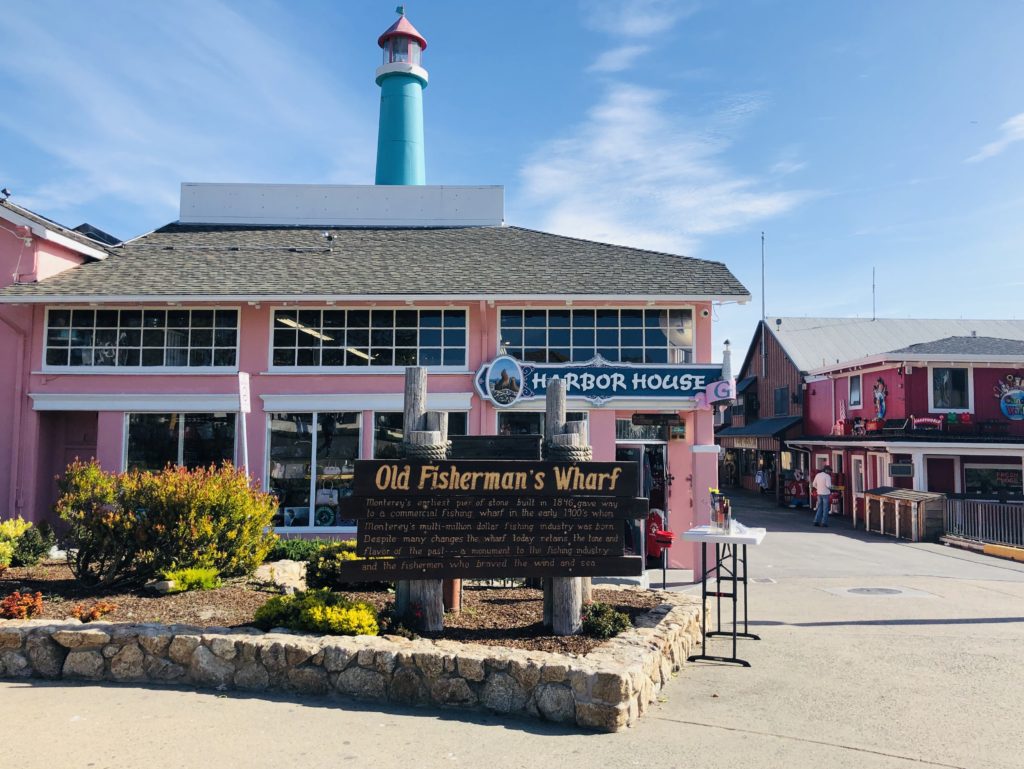
In 1845, Thomas Larkin began construction on what would become Fisherman’s Wharf. In 1870, the Pacific Coast Steamship Company completed the Wharf. As the fishing industry grew after the turn of the century, especially the sardine industry, the city of Monterey purchased the Wharf and began to expand it. After World War II, Fisherman’s Wharf converted to a tourist-oriented area.
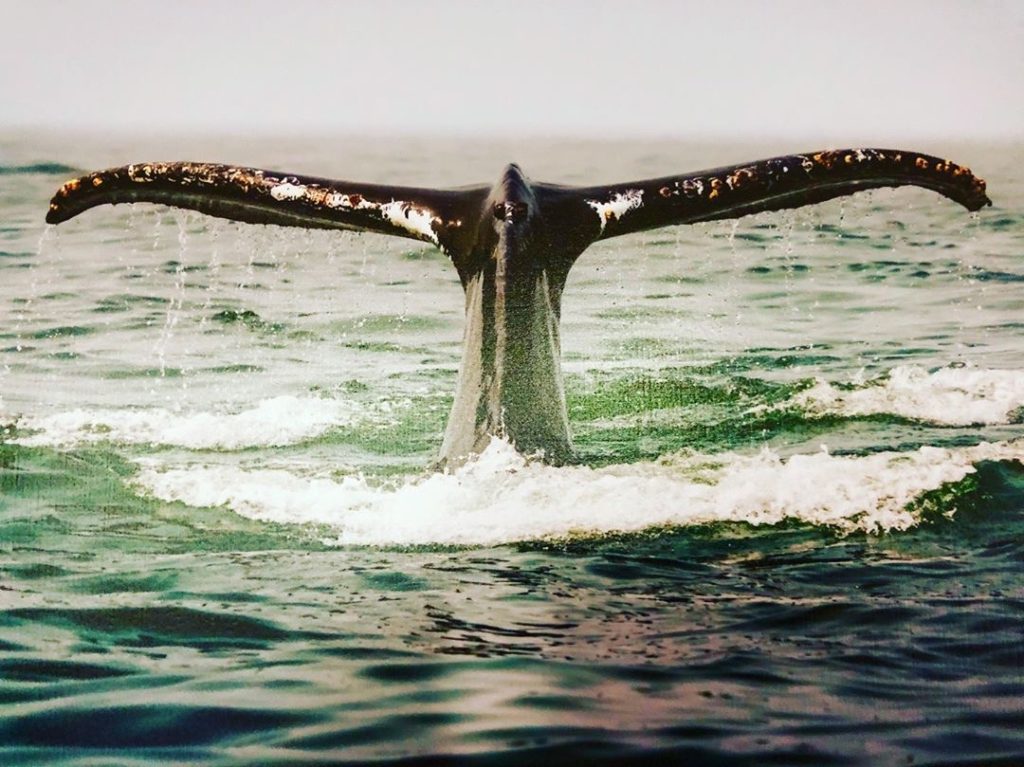
Fisherman’s Wharf in Monterey is known as the whale watching capital of the world, drawing nearly 4 million visitors a year. Gray whales, killer whales, humpback whales, blue whales and a plethora of other sea creatures can be seen here. Fisherman’s Wharf is part of the Monterey Bay National Marine Sanctuary. You can often spot whales off the shore, where they feed on plankton krill, squid and anchovies. For a closer view, whale cruises are available directly from the Wharf. Deep-sea fishing trips are also available.
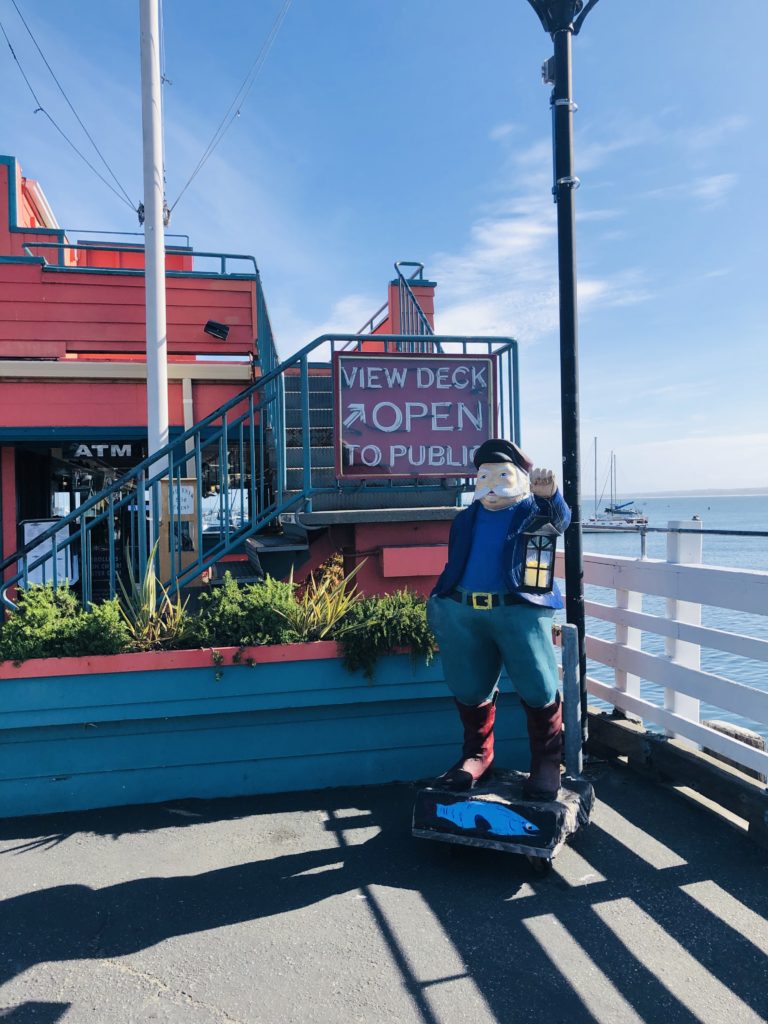
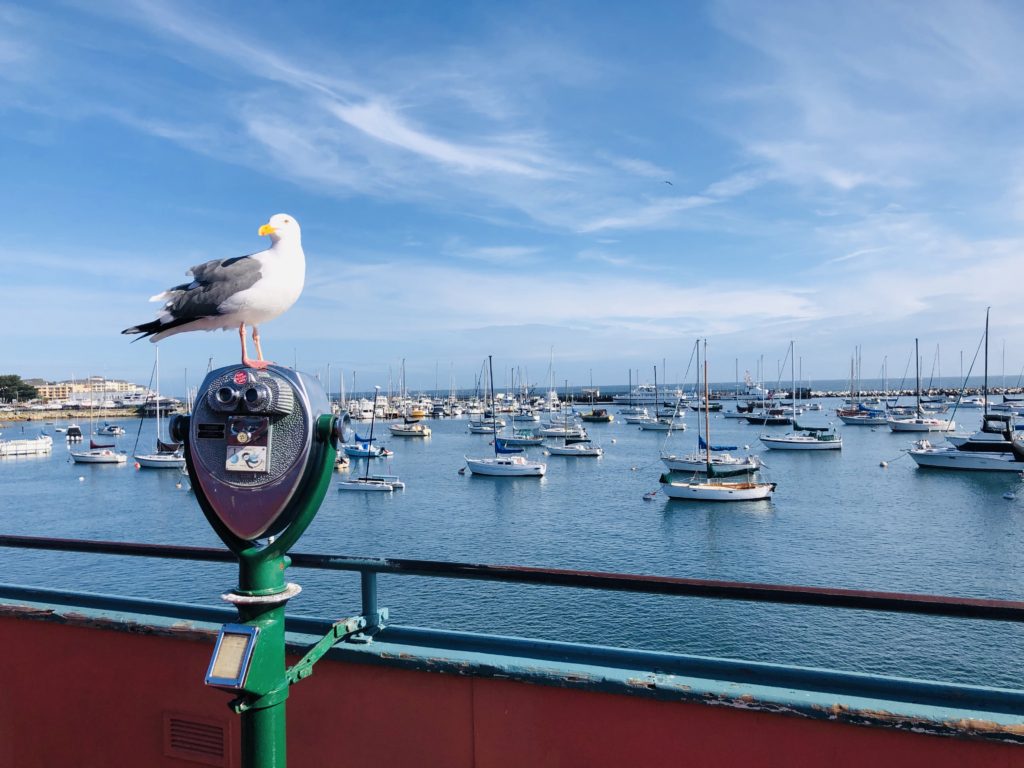
Fisherman’s Wharf is home to a charming plethora of wonderful restaurants. Some of the best fresh local seafood is available here, including abalone, Dungeness crab, oysters, California prawns, squid, and halibut. Many of the restaurants here have been in the same families for generations. Several restaurants have both quaint outdoor seating as well as ocean views inside. Many offer free samples of their delicious clam chowder!
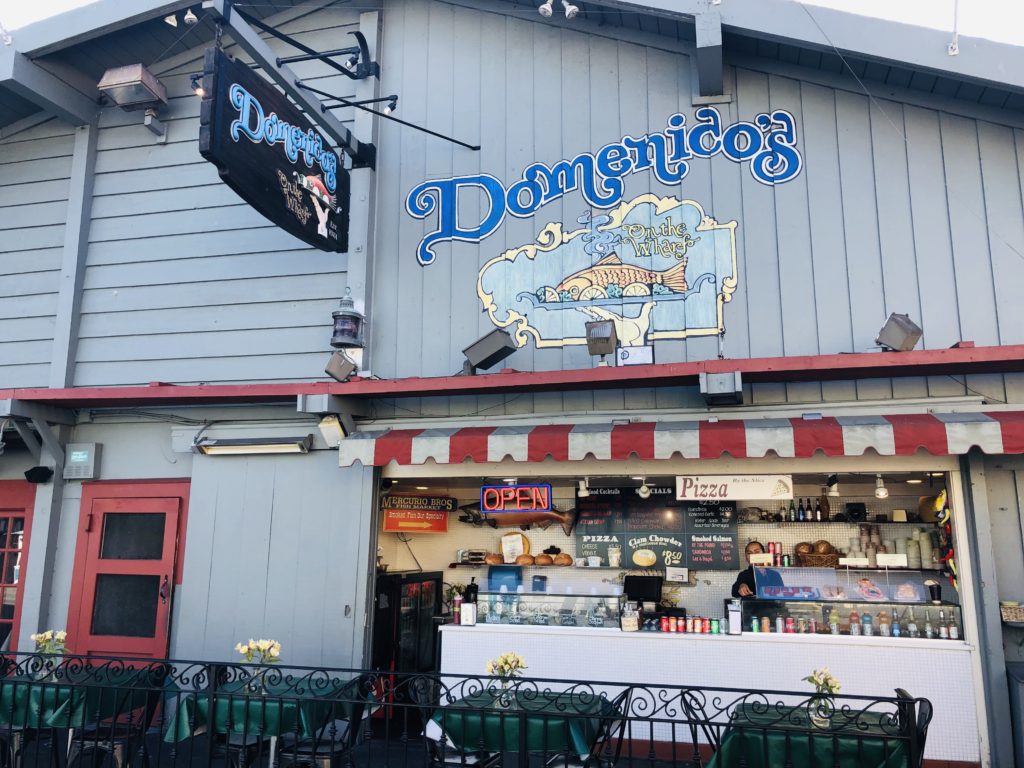
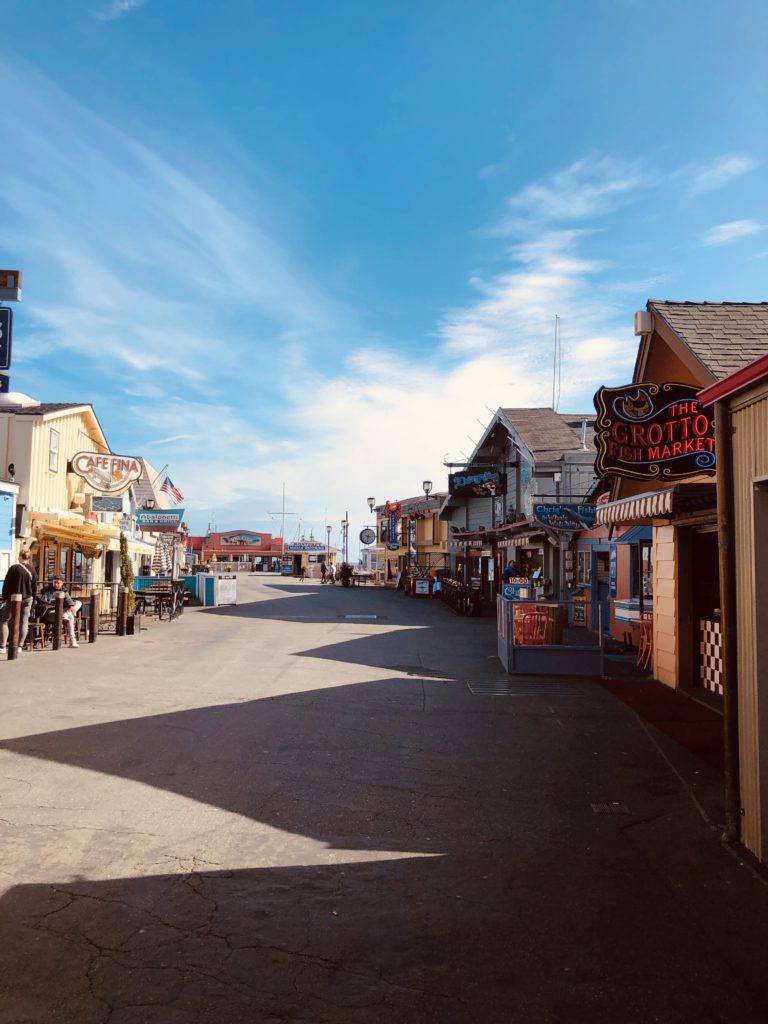
Fisherman’s Wharf also features a glorious array of coastal blooms. It is a flower lover’s paradise, especially in the spring. Eye-catching blossoms in a rainbow of colors abound. I absolutely love the beautiful flowers here!
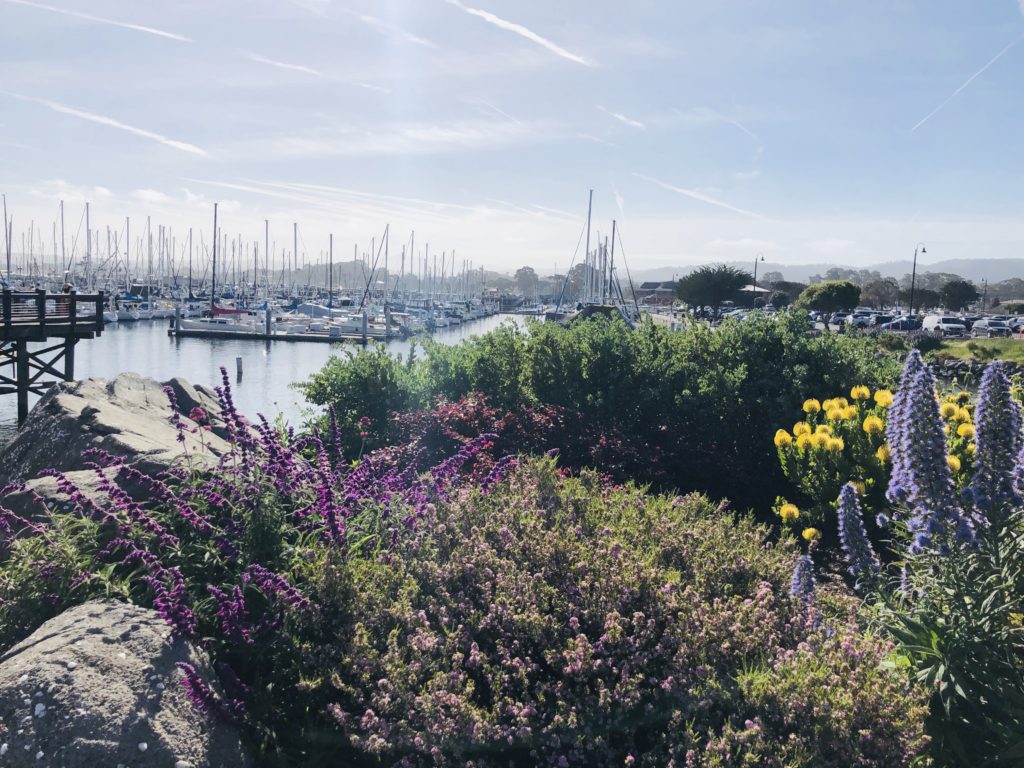
Fisherman’s Wharf is also a great place to people watch, beach comb, and explore the spectacular coastal recreational trail. You can often see and hear sea lions barking in the bay. The stunning views and vibes are priceless.
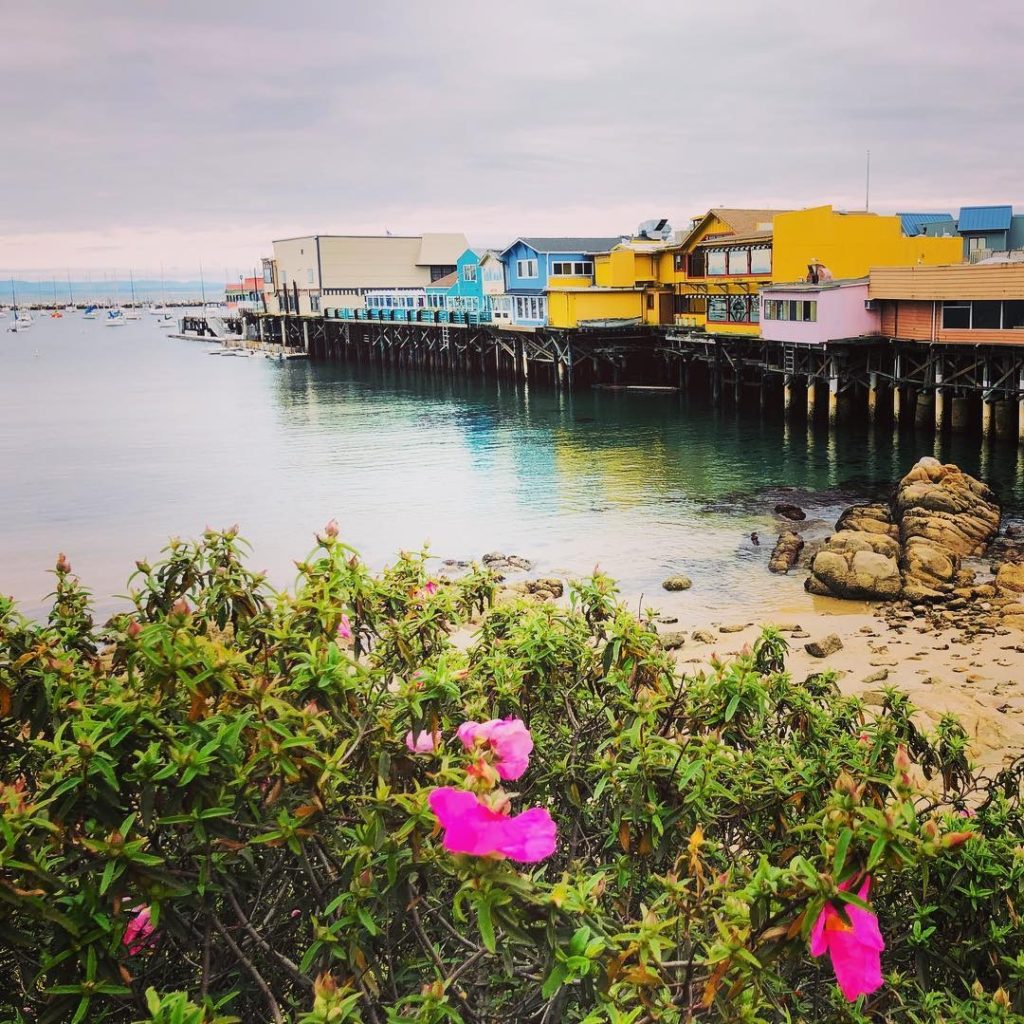
There are many benches available to just sit, relax, and take in the inspiring vistas.
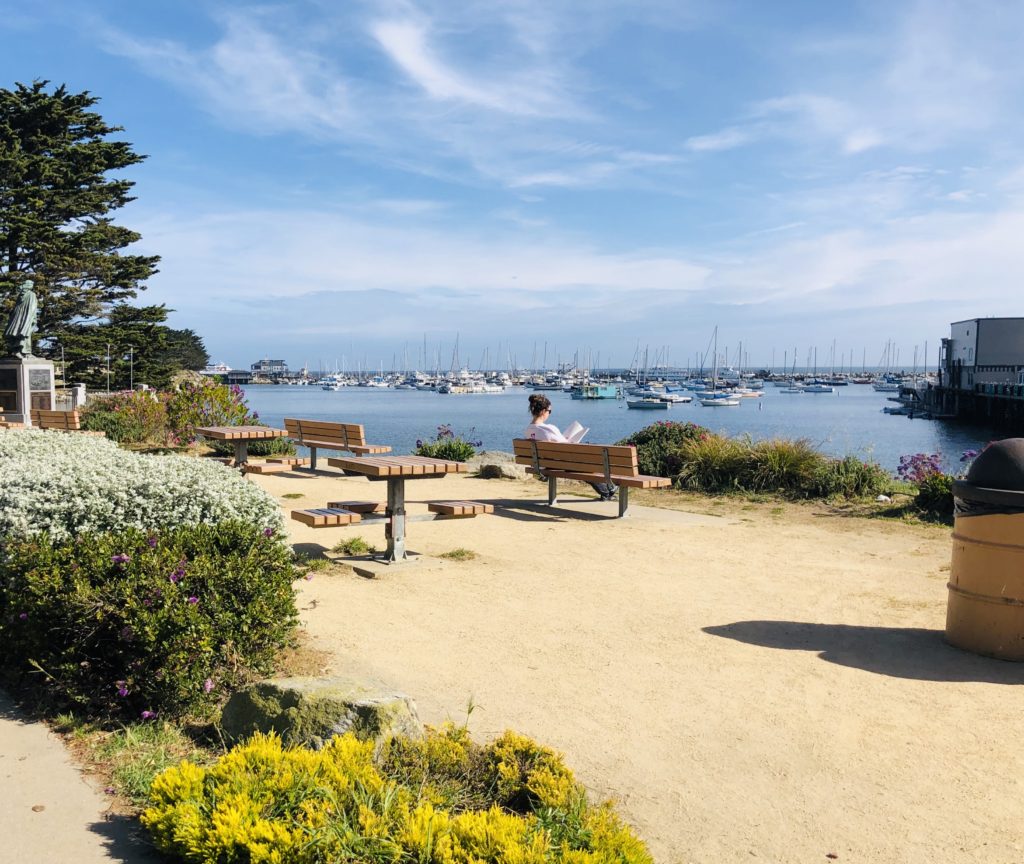
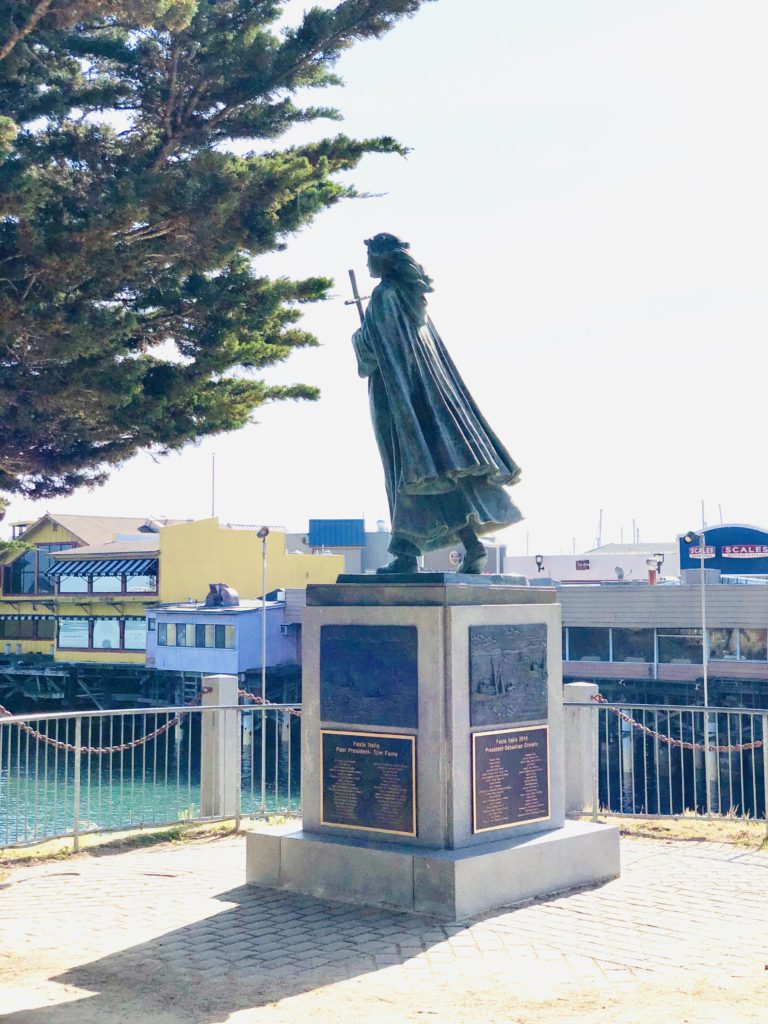
Santa Rosalia is the patron saint of the Italian fisherman who came to Monterey at the beginning of the 20th century. 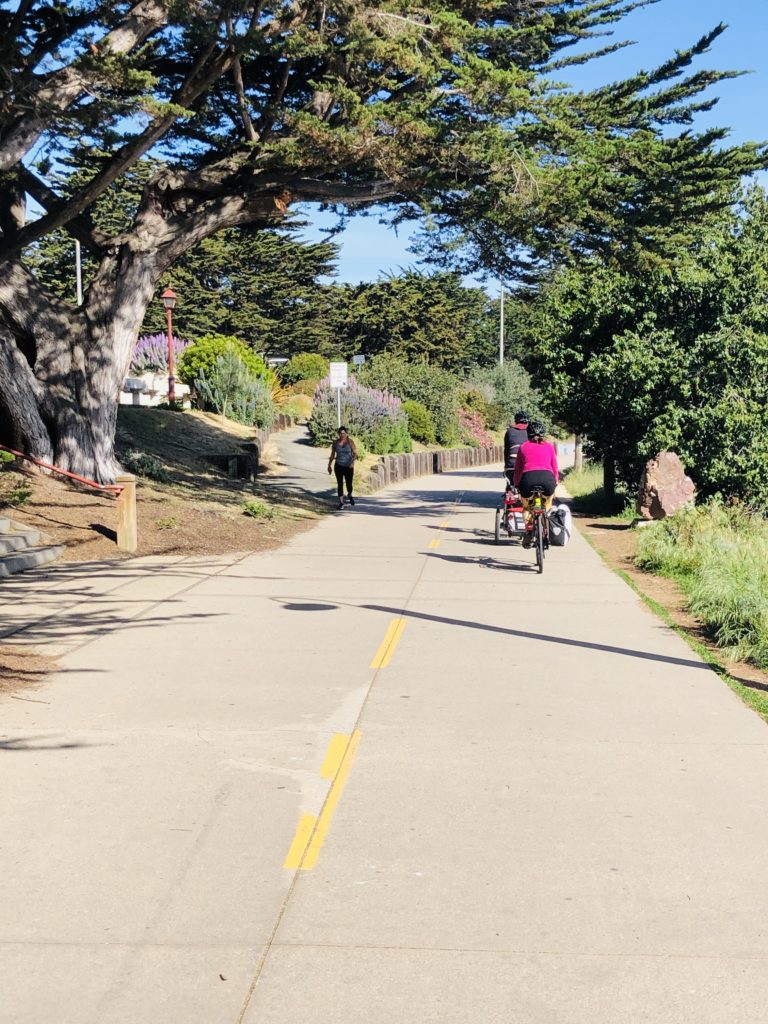
The coastal recreational path runs right past Fisherman’s Wharf. For more information on Fisherman’s Wharf, see City of Monterey, Monterey Wharf, or See Monterey.
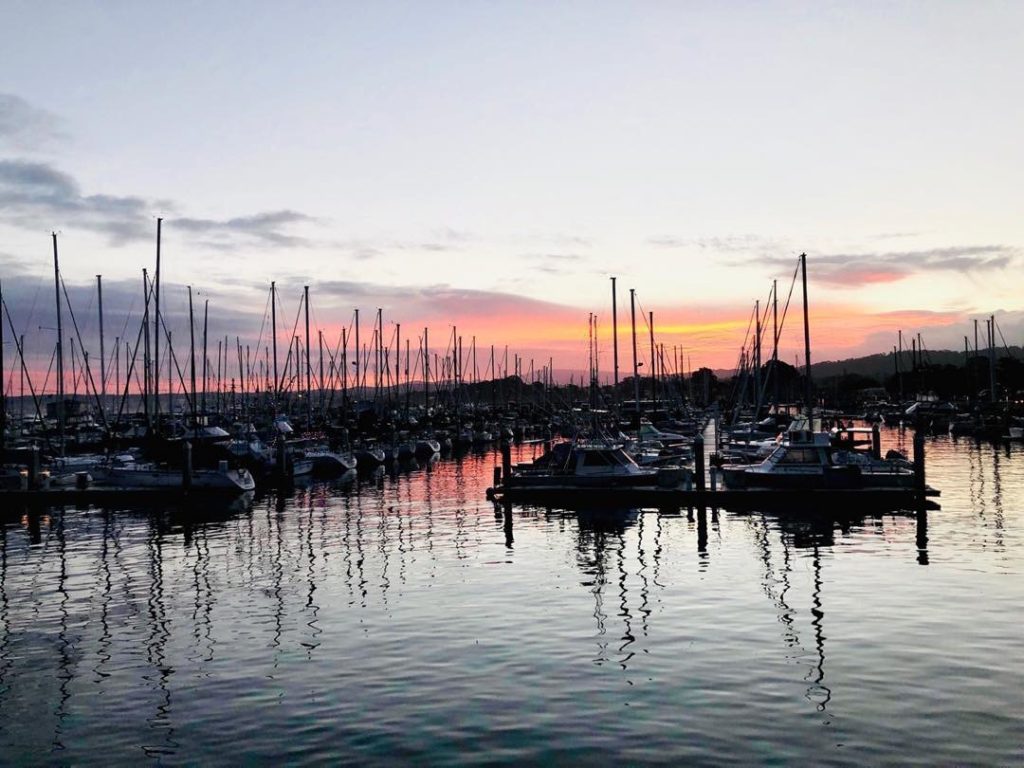
I hope you get to visit Fisherman’s Wharf! Thank you for visiting my blog. Wishing you peace, love, happiness & beautiful vistas!
-
Most Beautiful Sunset Quotes Ever!
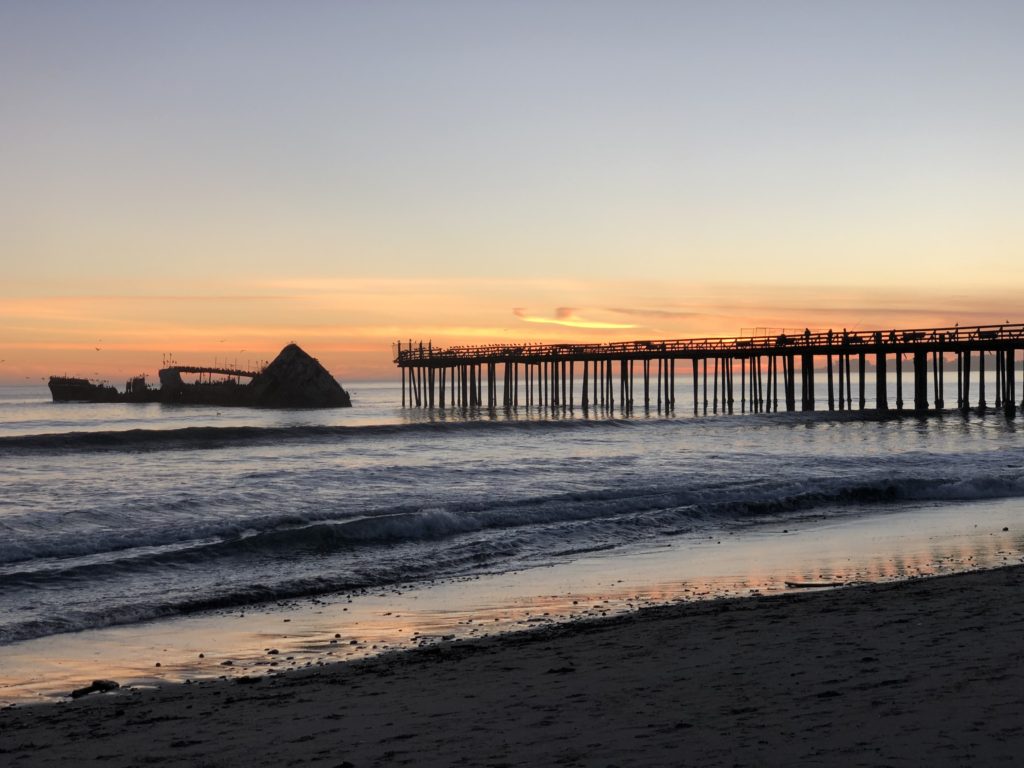
The water was glassy and calm, still candy-colored in the afterglow of sunset–Stephen King. There is nothing like watching the sun set in California. Sunsets here are incredibly surreal and beautiful. My obsession with them has fueled my penchant for taking oodles of photos. I thought I would pair my sunset captures with some of my favorite sunset quotes. I hope you enoy them!
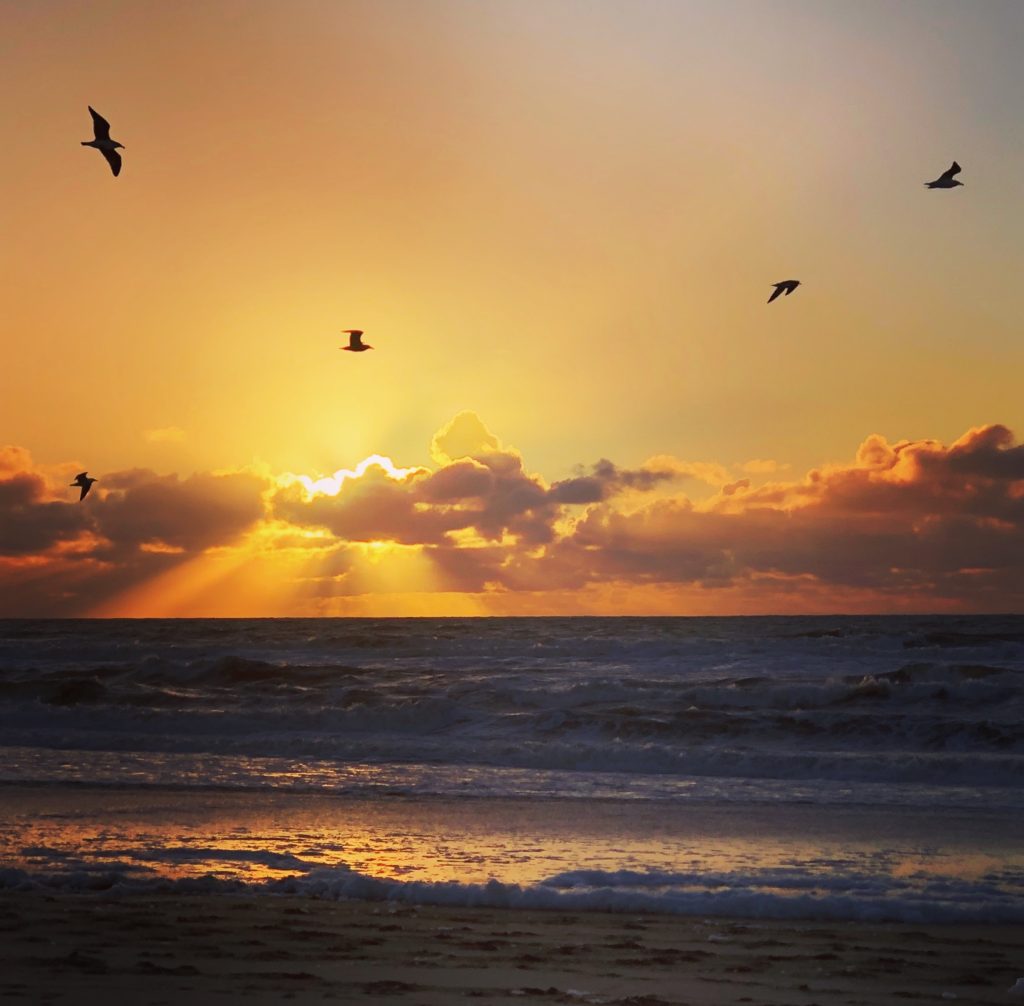
A sunset is the sun’s fiery kiss to the night–Crystal Woods. 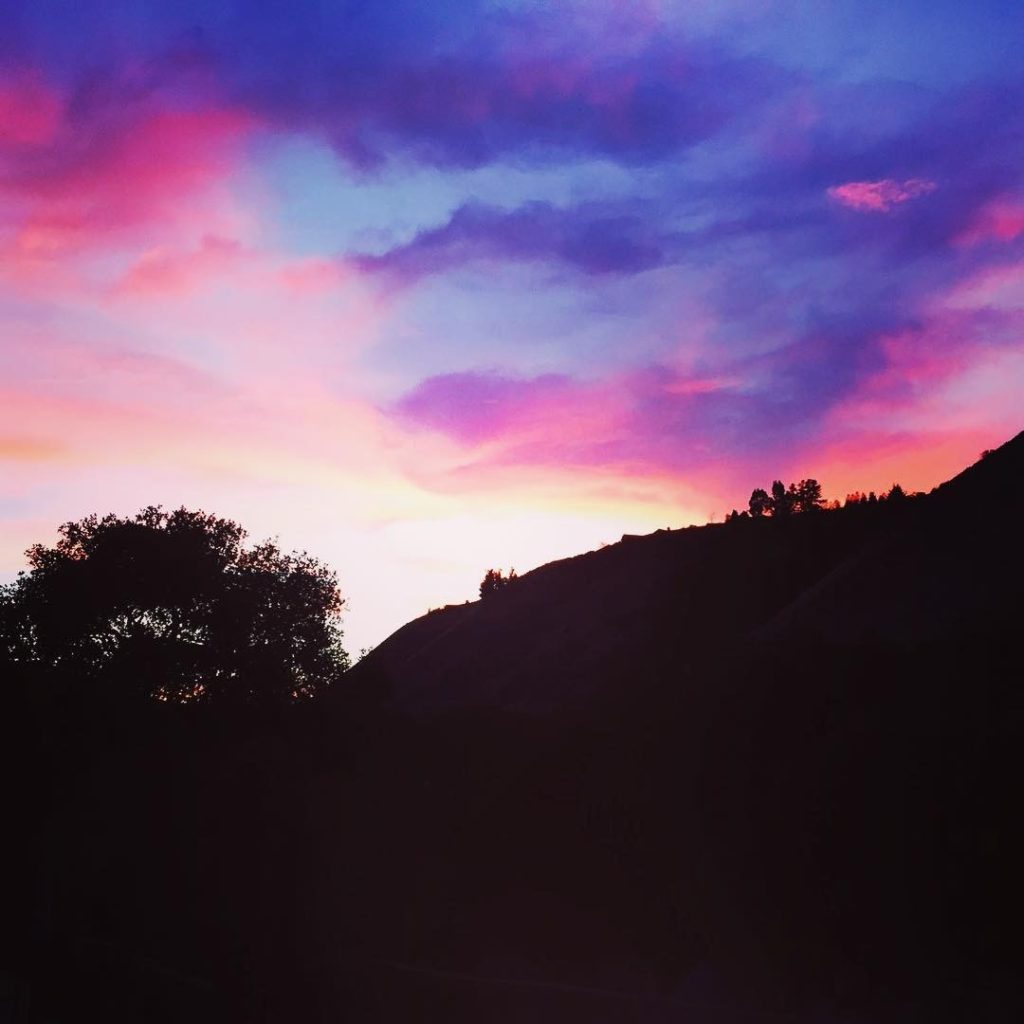
Soon it got dusk, a grapy dusk, a purple dusk over tangerine groves and long melon fields; the sun the color of pressed grapes, slashed with burgundy red, the fields the color of love and Spanish mysteries–Jack Kerouac. 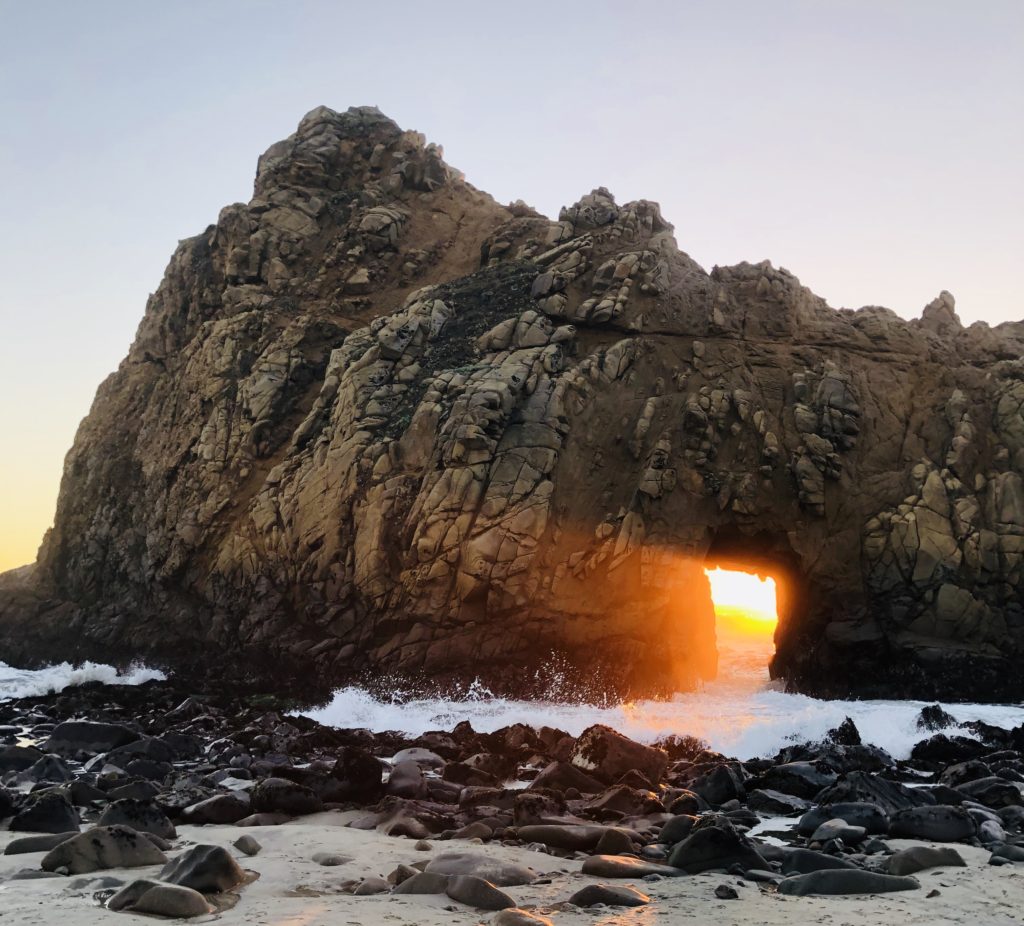
The sky broke like an egg into full sunset and the water caught fire–Pamela Hansford Johnson. 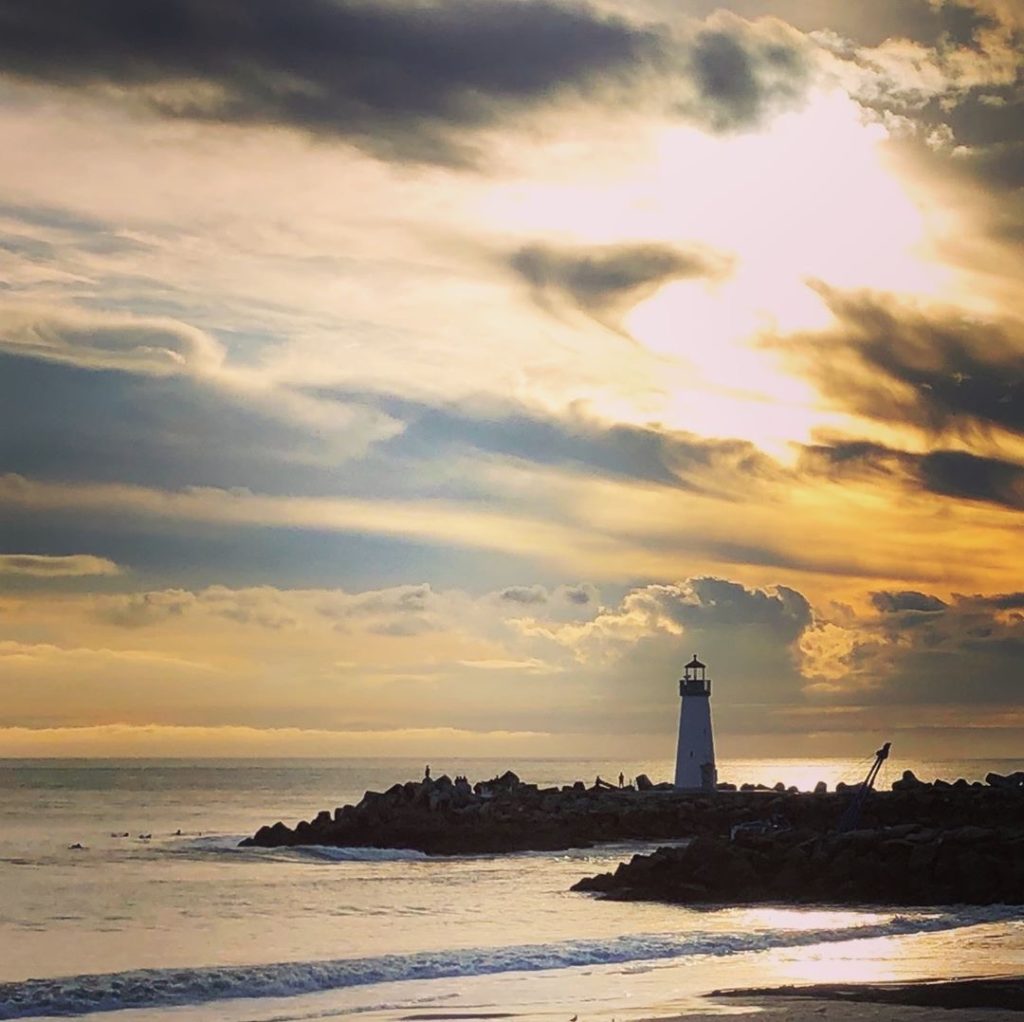
Clouds come floating into my life, no longer to carry rain or usher storm, but to add color to my sunset sky–Rabindranath Tagore. 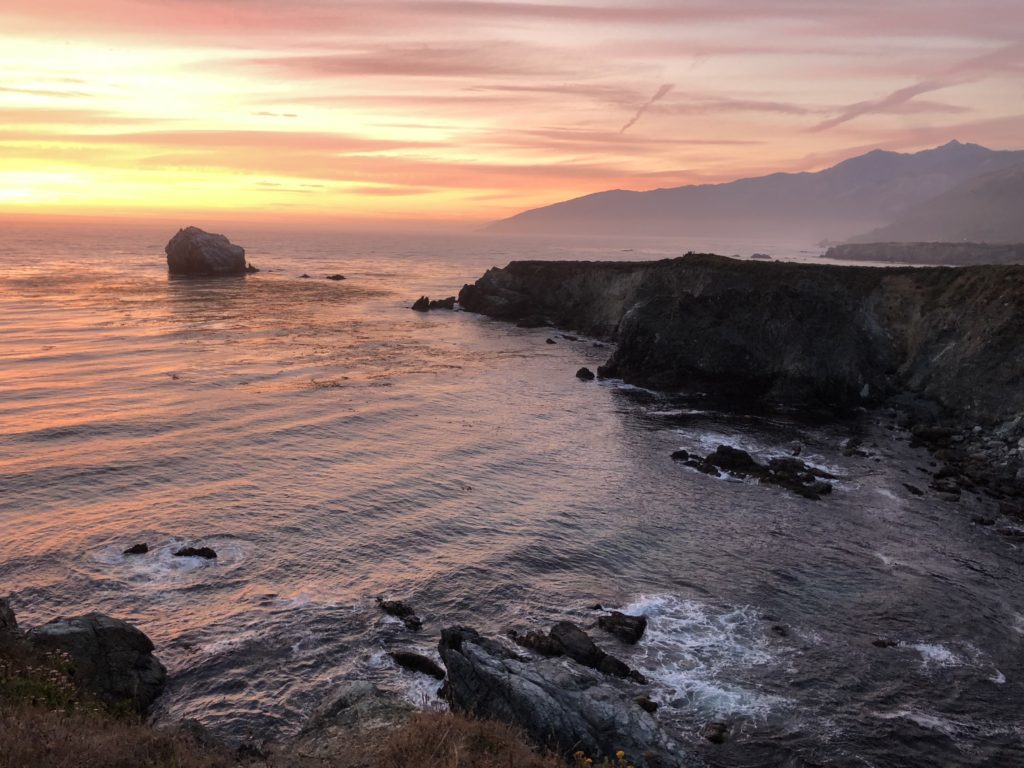
Twilight fell: The sky turned to a light, dusky purple littered with tiny silver stars–J.K. Rowling. 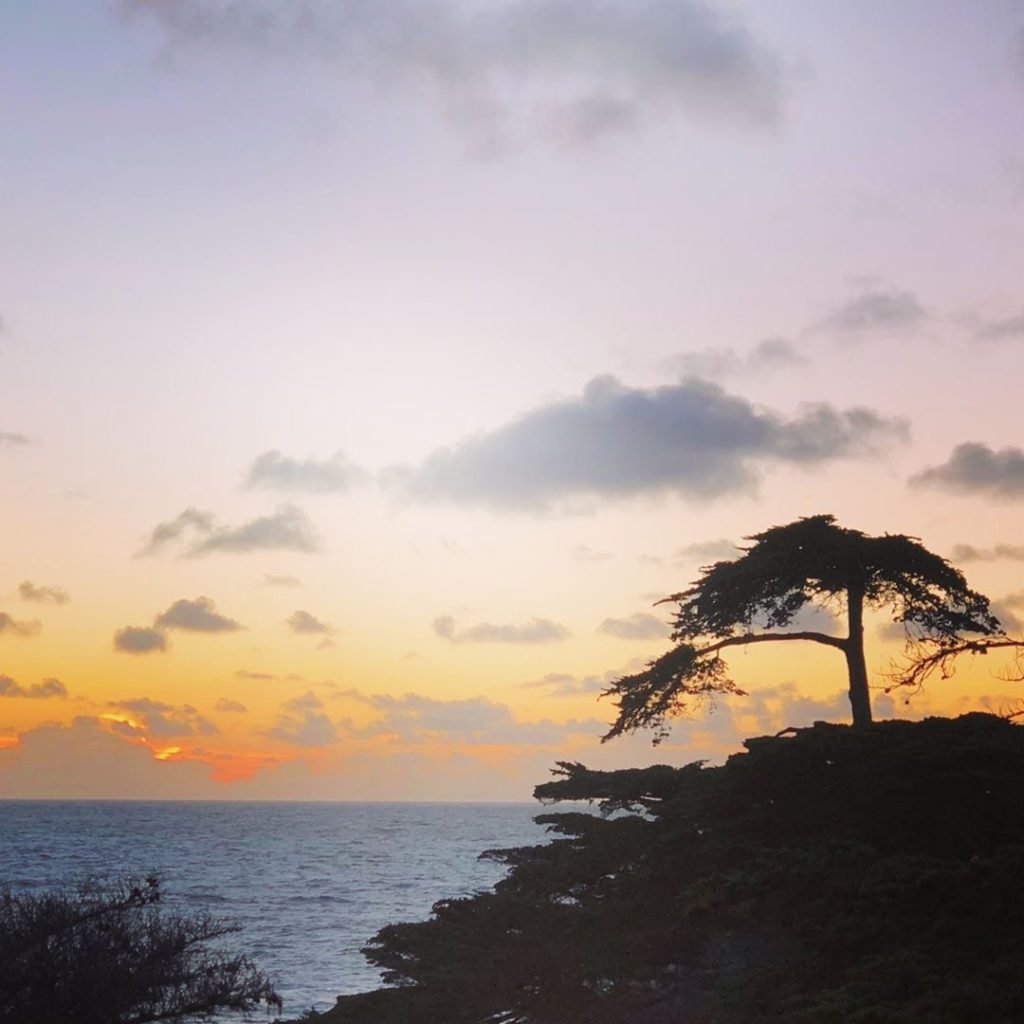
Softly the evening came with the sunset–Henry Wadsworth Longfellow. 
What can you see on the horizon, why do the white gulls call? Across the sea, a pale moon rises. The ships have come to carry you home. And all will turn to silver glass, a light on the water. Grey ships pass into the west–Annie Lennox. 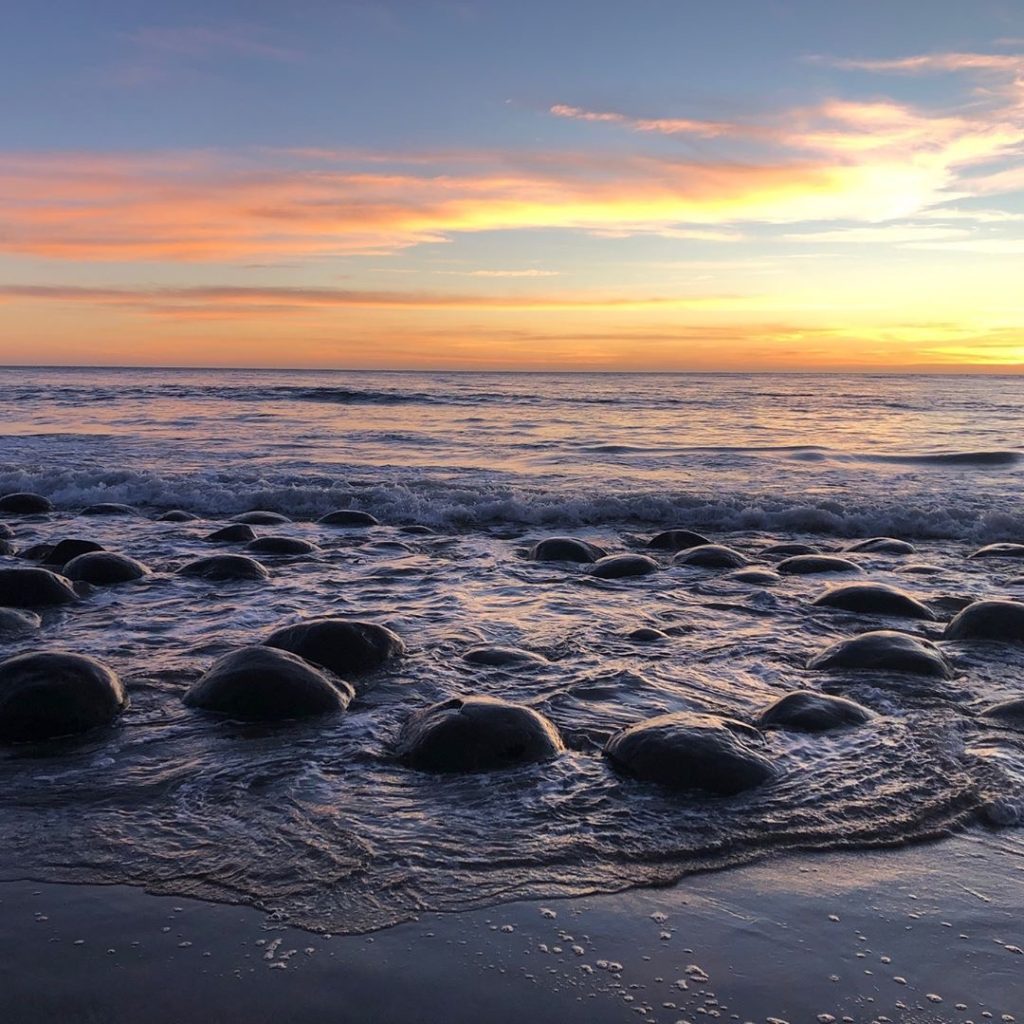
When the sun has set, no candle can replace it–George R. R. Martin. 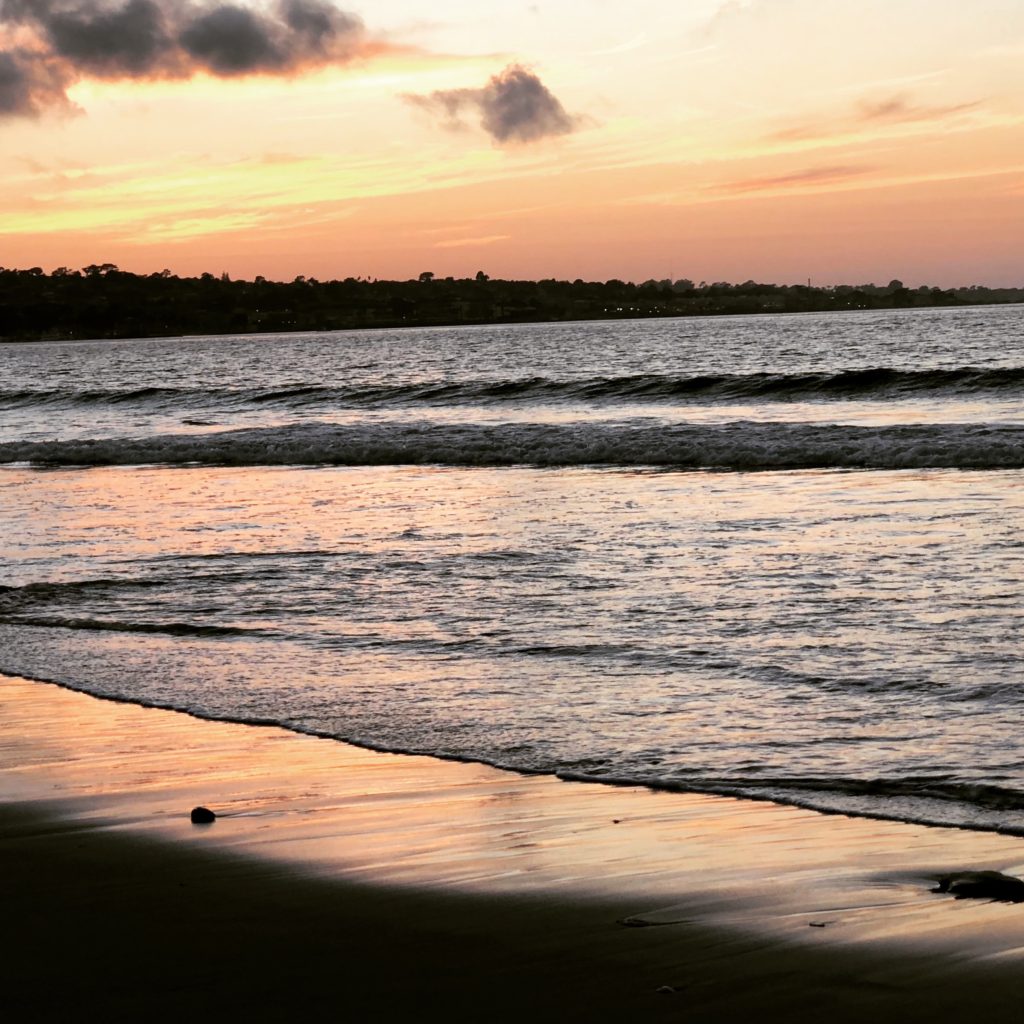
Sunsets, like childhood, are viewed with wonder not just because they are beautiful but because they are fleeting–Richard Paul Evans. 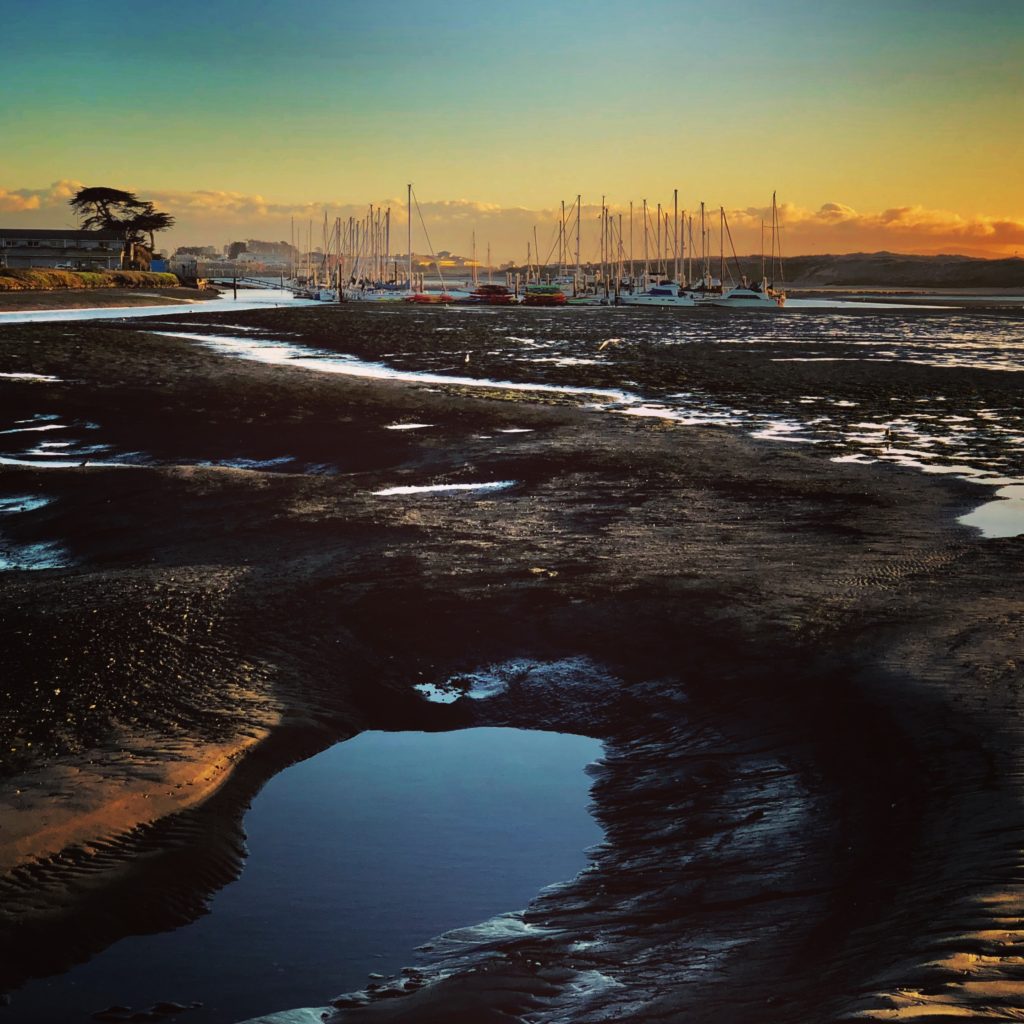
It is almost impossible to watch a sunset and not dream–Bern Williams. 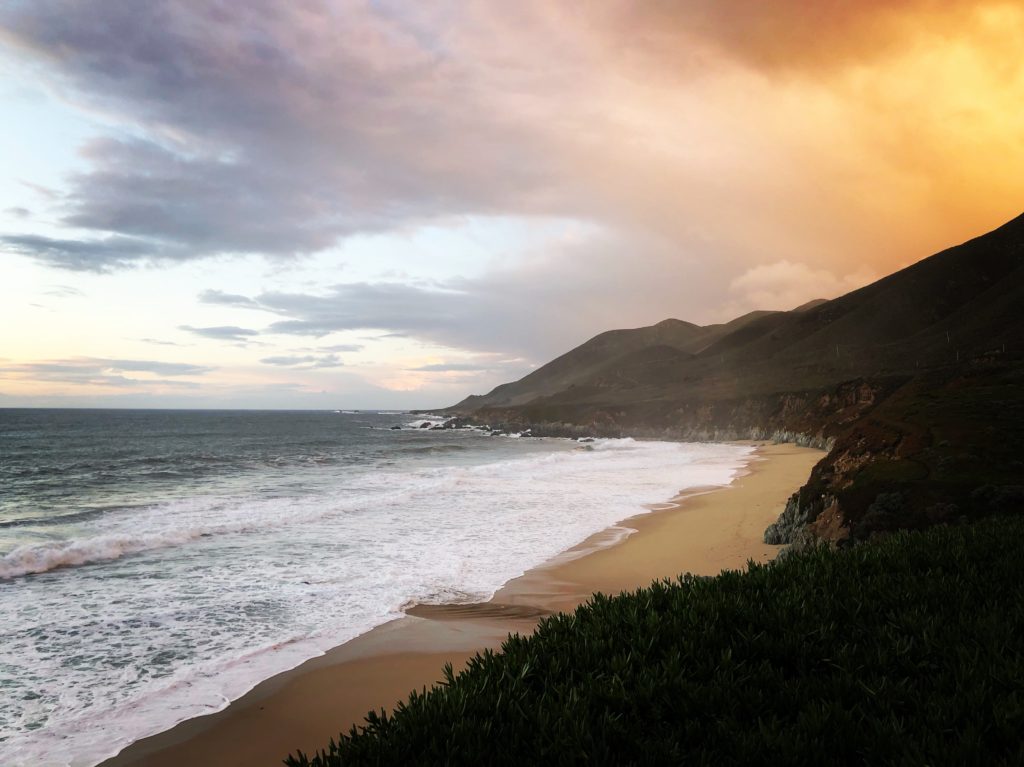
Know what you want to do, hold the thought firmly, and do every day what should be done, and every sunset will see you that much nearer to your goal–Elbert Hubbard. 
No matter where you are in the world, I hope you are able to enjoy your sunsets. Thank you for visiting my blog. Wishing you peace, love, happiness, and beautiful vistas!
-
Corral de Tierra, The Pastures of Heaven
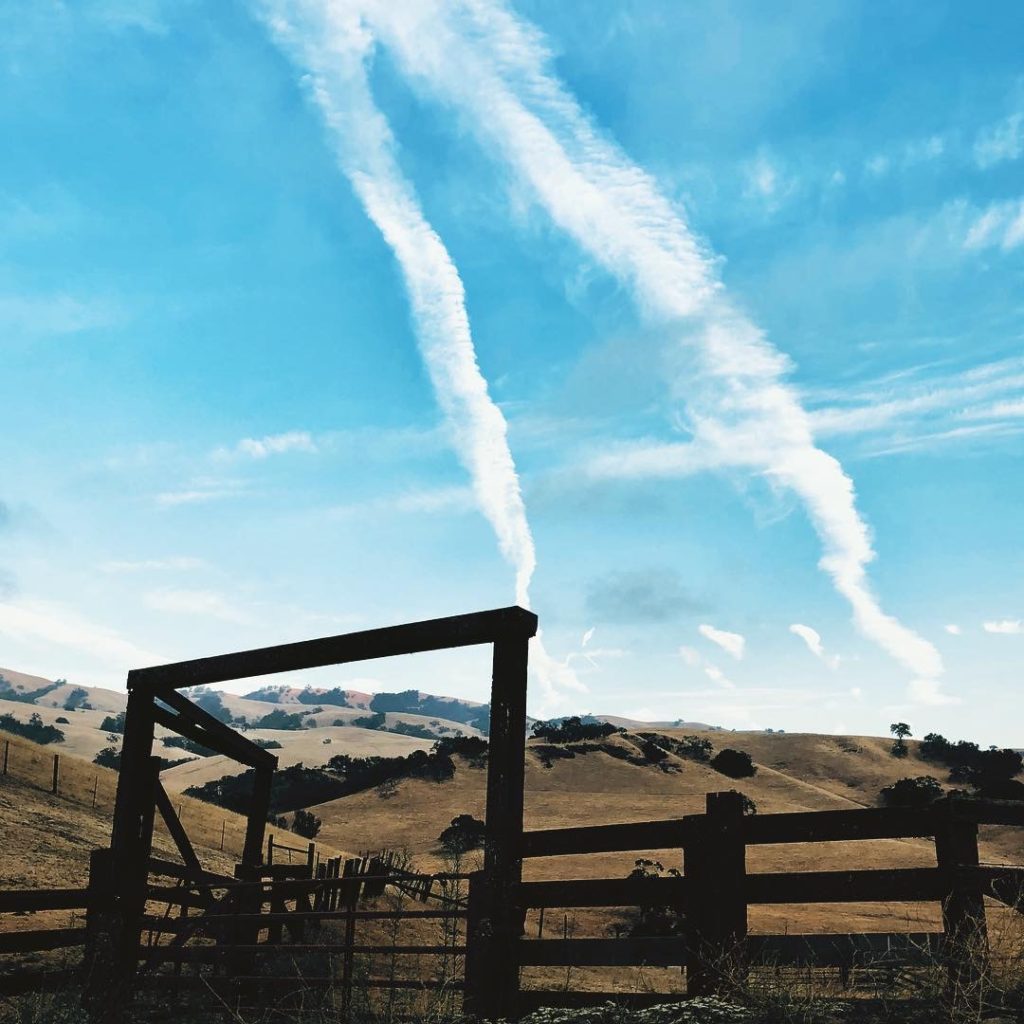 Heaven is under our feet as well as over our heads–Henry David Thoreau.
Heaven is under our feet as well as over our heads–Henry David Thoreau.Corral de Tierra is a pastoral area of verdant meadows and remote canyons situated midway between Salinas and Monterey. It is notable for the innumerable California live oaks that flourish here. It is considered to be in the “sun belt” so that even if it is foggy and gray in nearby Salinas and Monterey, the sun is usually shining here. The area comprises many small communities including Serra Village, Toro Park Estates, San Benancio, The Villas, The Meadows, Markham Estates, Corral de Tierra Country Club, Laureles Grade, Chamisal, Vista Dorada, and Laguna Seca Estates, as well as myriad vineyards, farms and ranches. It is named for the Mexican rancheros who used a canyon in the upper valley during the 1700s to hold their cattle. Corral de Tierra literally means “fence of earth”.
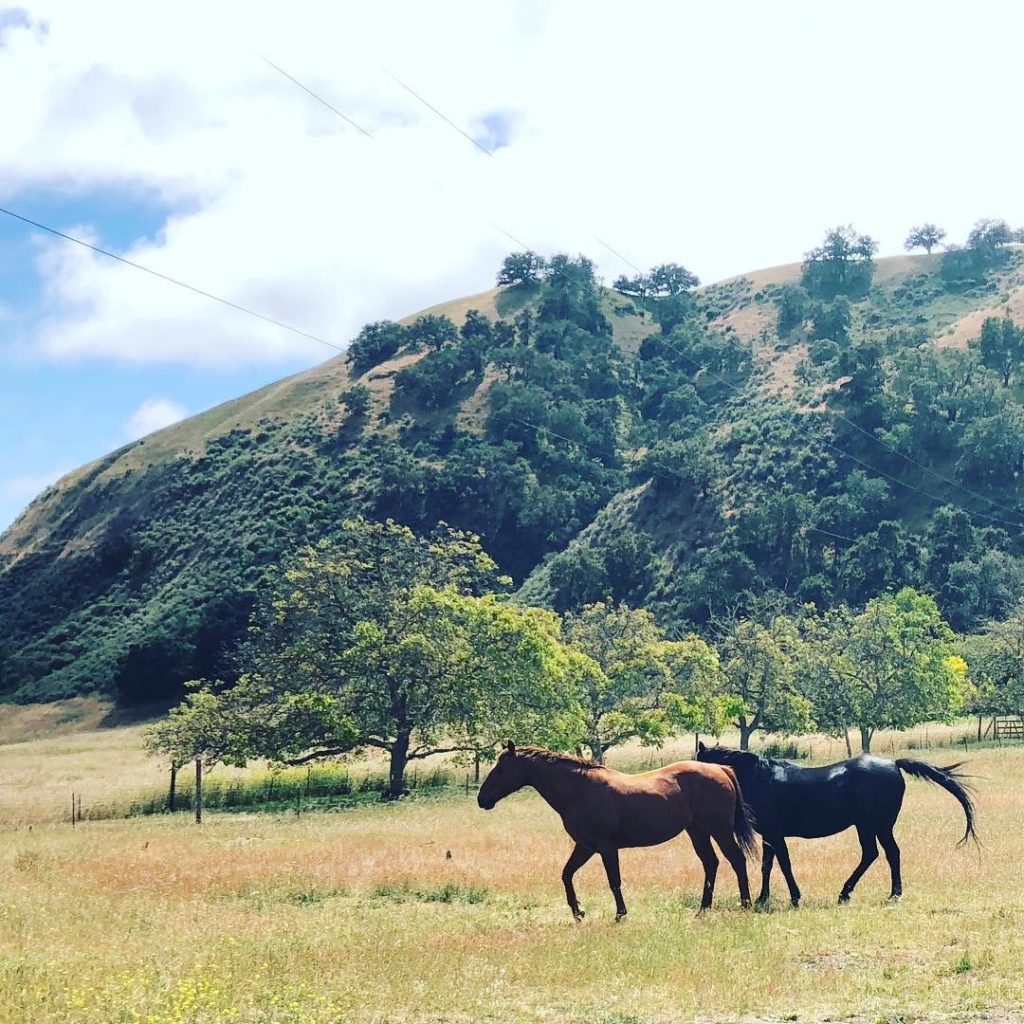
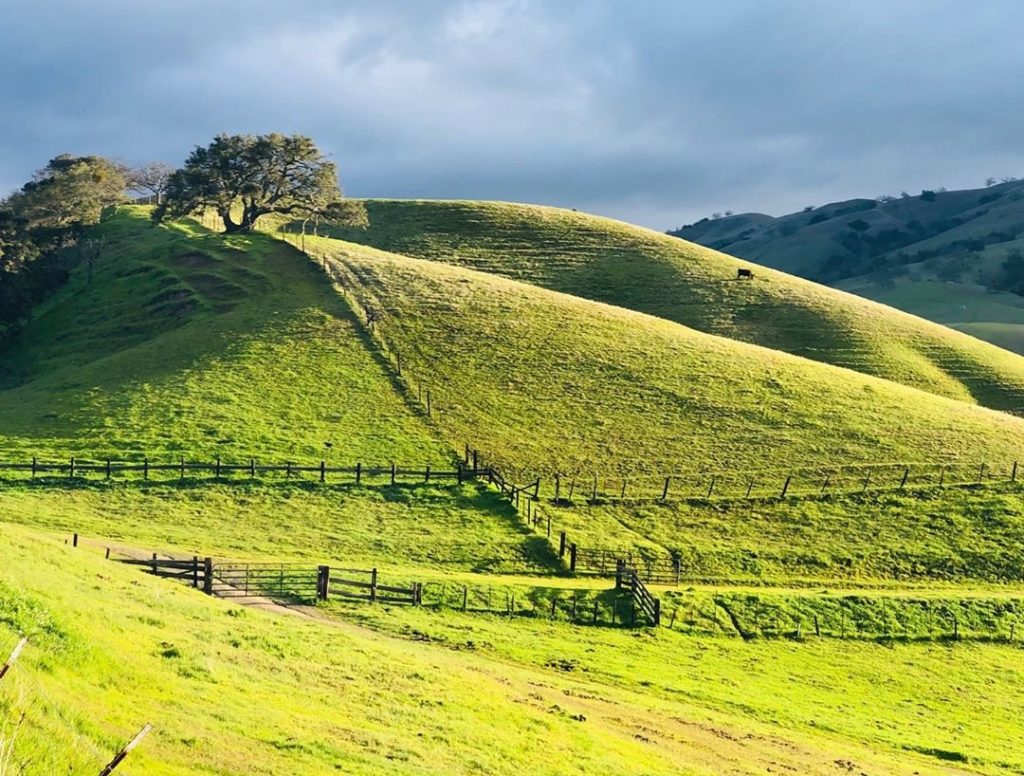
Underwood Canyon in Corral de Tierra is breathtaking in the spring. Corral de Tierra’s transformation from a vast wilderness to a settlement begins with a love story. In 1836, Governor Nicolas Gutierrez granted over four thousand acres in the area to Francisco Figueroa in exchange for the hand of his daughter Guadalupe. I picture the story unfolding with Guadalupe, leaning out of the window of a beautiful Spanish style home. She is wearing an exquisite lace dress, has beautiful flowing black hair, and is holding a crimson rose that the dark and handsome Nicolas has given her just before he rides off into the sunset on a meticulously groomed stallion. We will never truly know how this love story played out. Following the Mexican-American War, California was ceded to the United States and homesteads began to spring up as a series of new owners bought and sold land here.
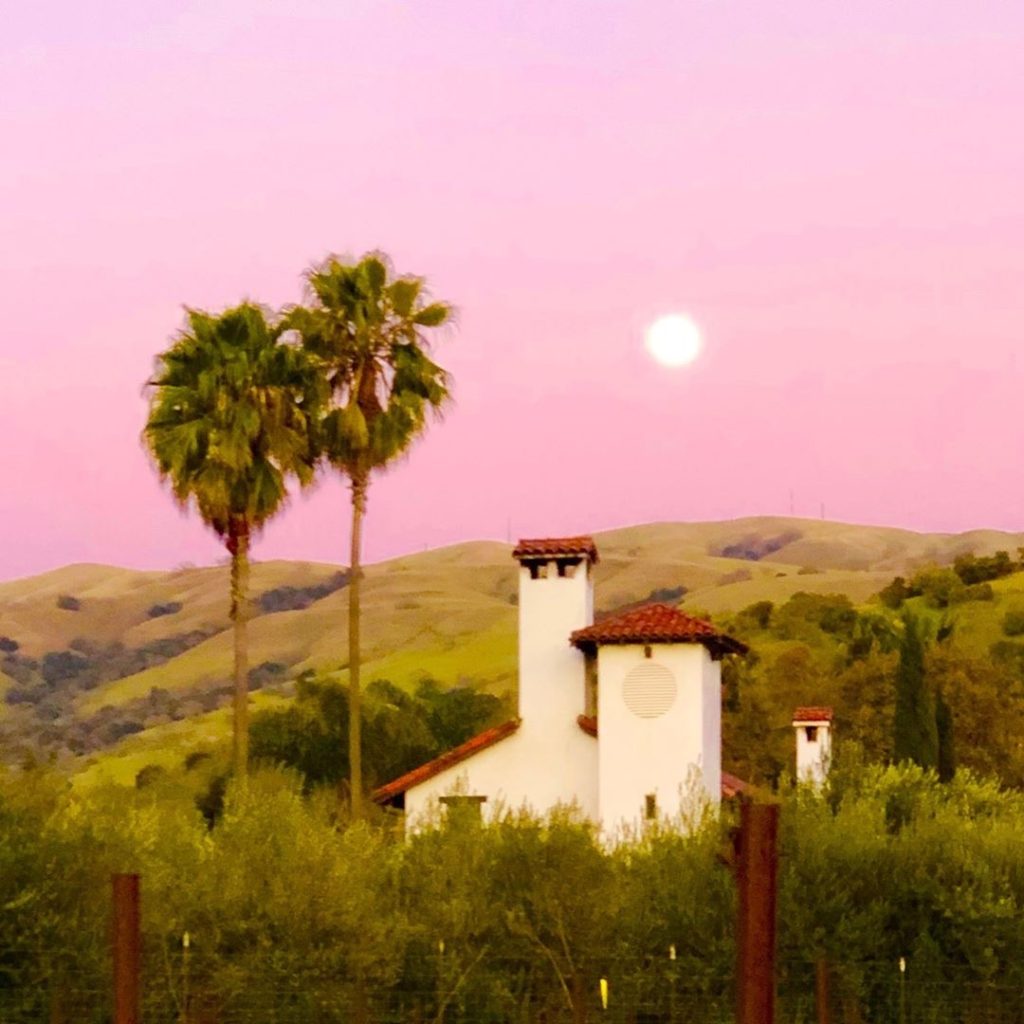
The De Tierra Vineyard & Winery is located in Corral de Tierra. Growth was slow in the area until the 1950s, when the Corral de Tierra Country Club was built. In the 1960s, the Chamisal Country Club was established. There were originally two schools in the area: Washington Elementary School at mid-valley was established in 1873 and is still going strong today. Lincoln School, built in 1887, was located at the intersection of Underwood and Corral de Tierra, but no longer exists. San Benancio Middle School is a newer school located at the corner of San Benancio and Hwy 68. There are two churches in the area: Good Shepherd Episcopal Church and Cypress Community Church. The clubs, schools, and churches here provide a sense of connection and an avenue for social events within the community.
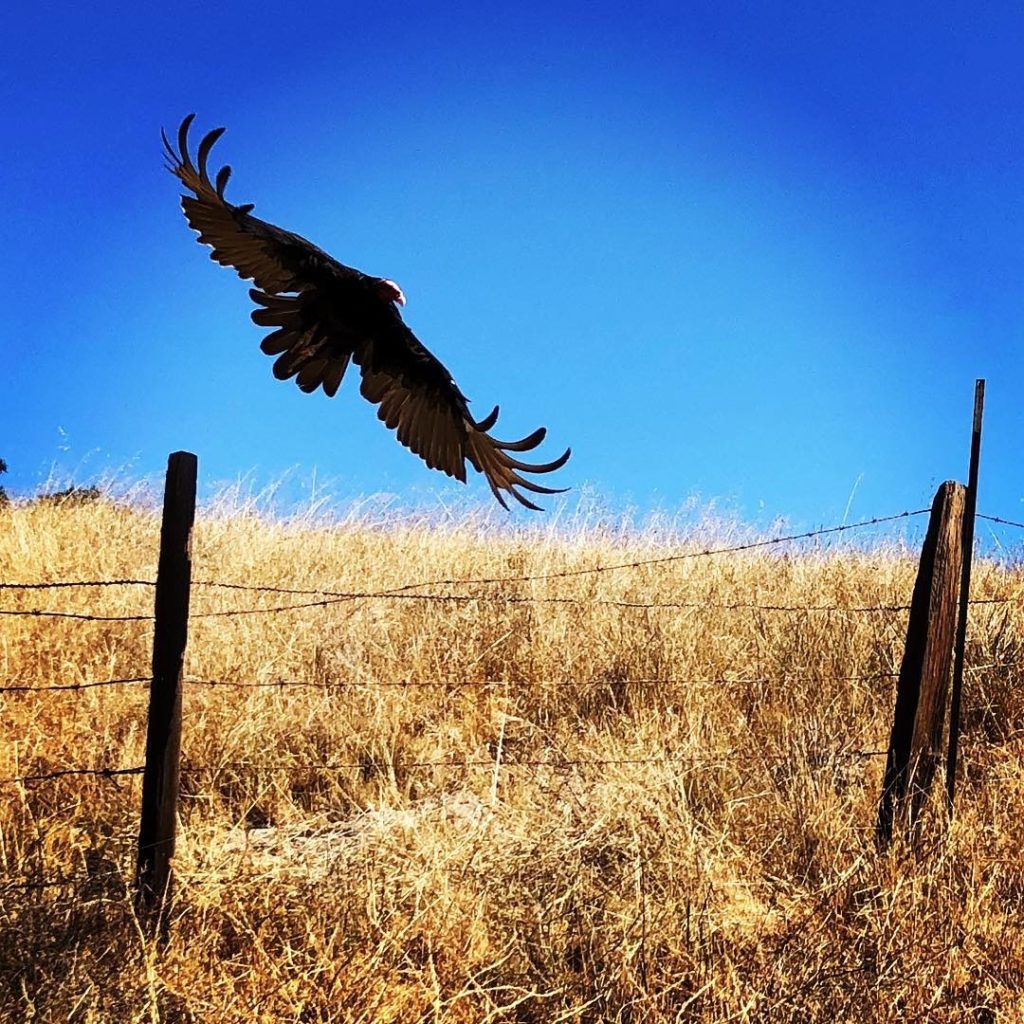
Turkey vultures, bobcats, magpies, deer, wild turkeys and quail are frequently seen here. John Steinbeck, the famous author, often stayed with his maternal aunt in Corral de Tierra. She lived on a farm near the present day Markham Ranch. Steinbeck was not only a prolific writer, but also an avid reader, and loved the tales of King Arthur and the Knights of the Round Table. He enjoyed exploring the rugged sandstone bluffs of Castle Rock in Corral de Tierra, near his aunt’s farm, and imagined the area as the citadel of Camelot. While the public cannot access Castle Rock, located within Markham Ranch, it is clearly visible from Corral de Tierra Road.
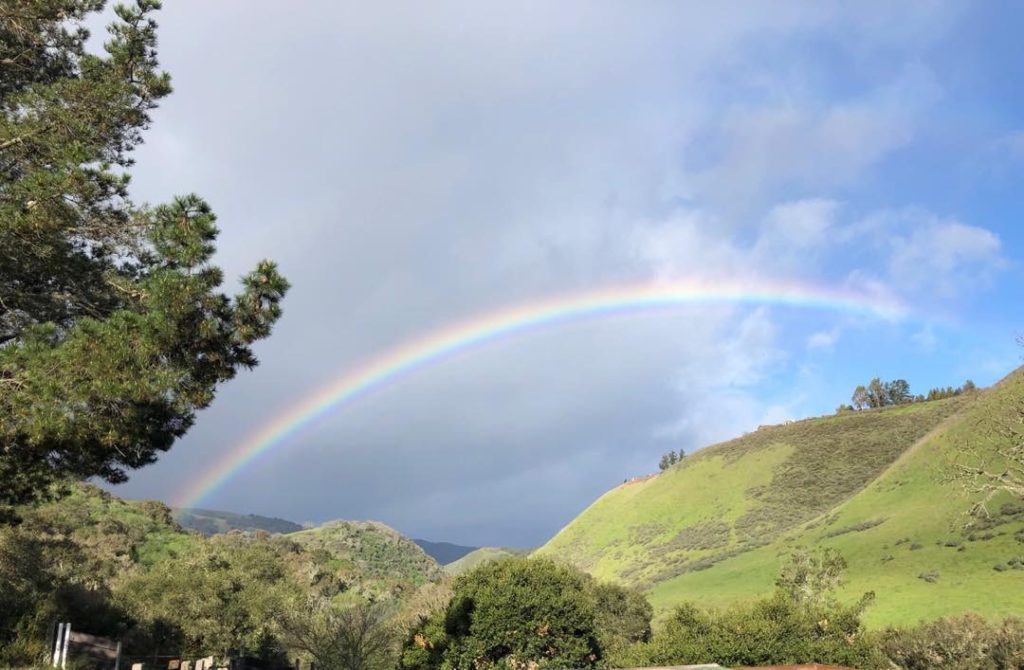
A rainbow seen from my farm. Steinbeck’s experiences in Corral de Tierra were the catalyst for a collection of stories presented in his novel “The Pastures of Heaven.” In this novel, a Spanish Corporal discovers the area while chasing runaway Native American slaves that have abandoned their work building a Catholic mission. When he arrives at a ridge and sees a breathtaking view of the fertile valley below, he is smitten and christens the valley “Las Pasturas del Cielo” or “The Pastures of Heaven.” From that time on, he plans on returning to the beautiful valley, but his hopes are never realized. Steinbeck’s work was based on a real Spanish Corporal who did, in fact, discover the area in 1776 while pursuing Rumsen Indians who had escaped from the San Carlos Mission in Carmel.
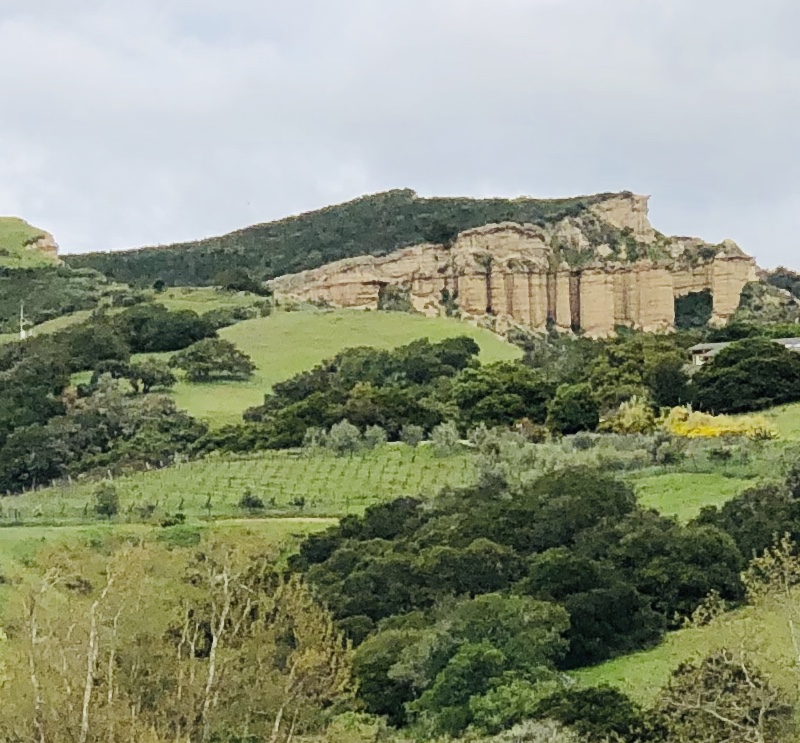
Castle Rock, Steinbeck’s childhood playground, is located in Markham Ranch. Fun activities in Corral de Tierra include biking, hiking, swimming, golfing, tennis, horseback riding, and birdwatching. It is also a great place for astronomers: with a clear night sky far away from city lights, nearly every constellation is visible. Corral de Tierra is also a popular area for plein air artists. Plein air began in France in the 1890s as a movement seeking to create art in outdoor settings in natural light and weather conditions.
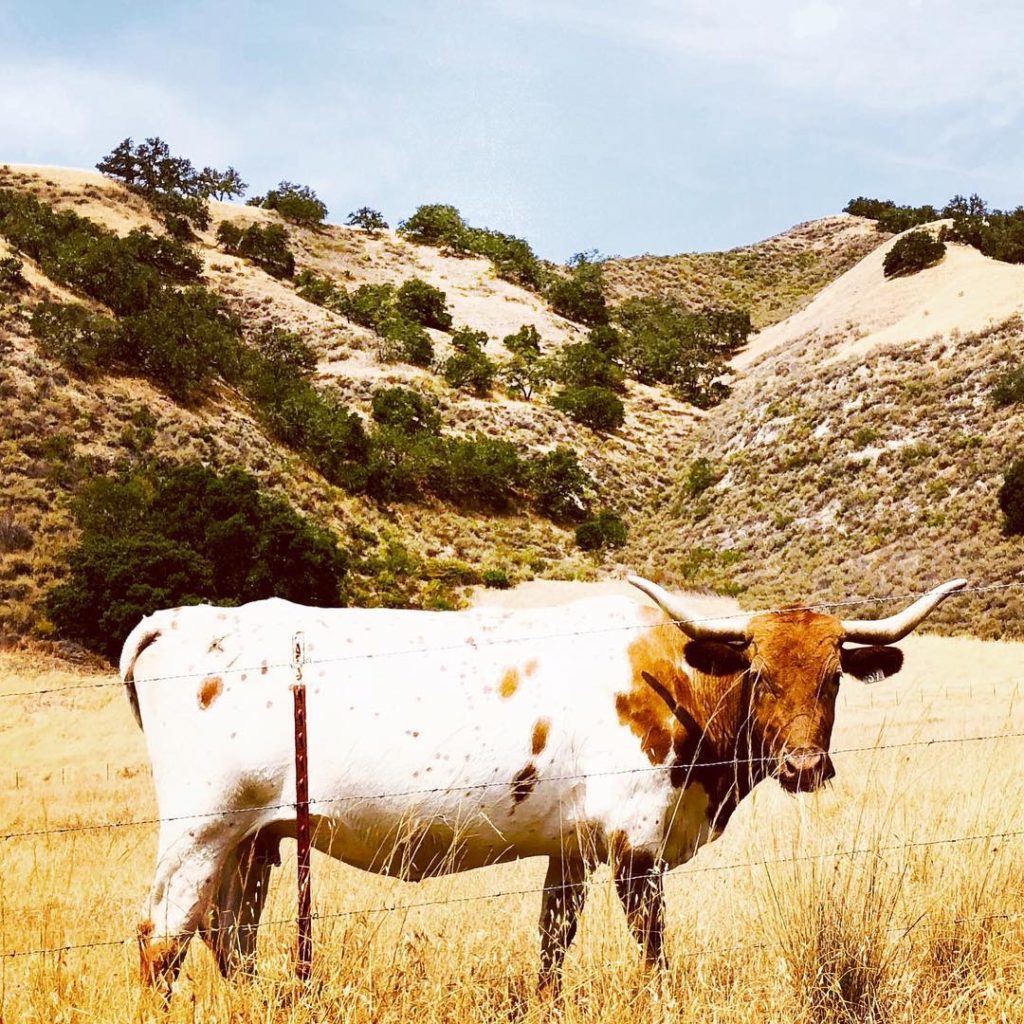
Living near so many ranches means seeing cattle and horses every day! What I love most about living in Corral de Tierra is the peacefulness and the sense of community. There is a genuine and authentic calmness and simplicity here. Neighbors are like family. I adore mine and am eternally grateful for them. No matter what happens in life, or where I end up, I will always thank my lucky stars for the beautiful and amazing experience I’ve had in the Pastures of Heaven.
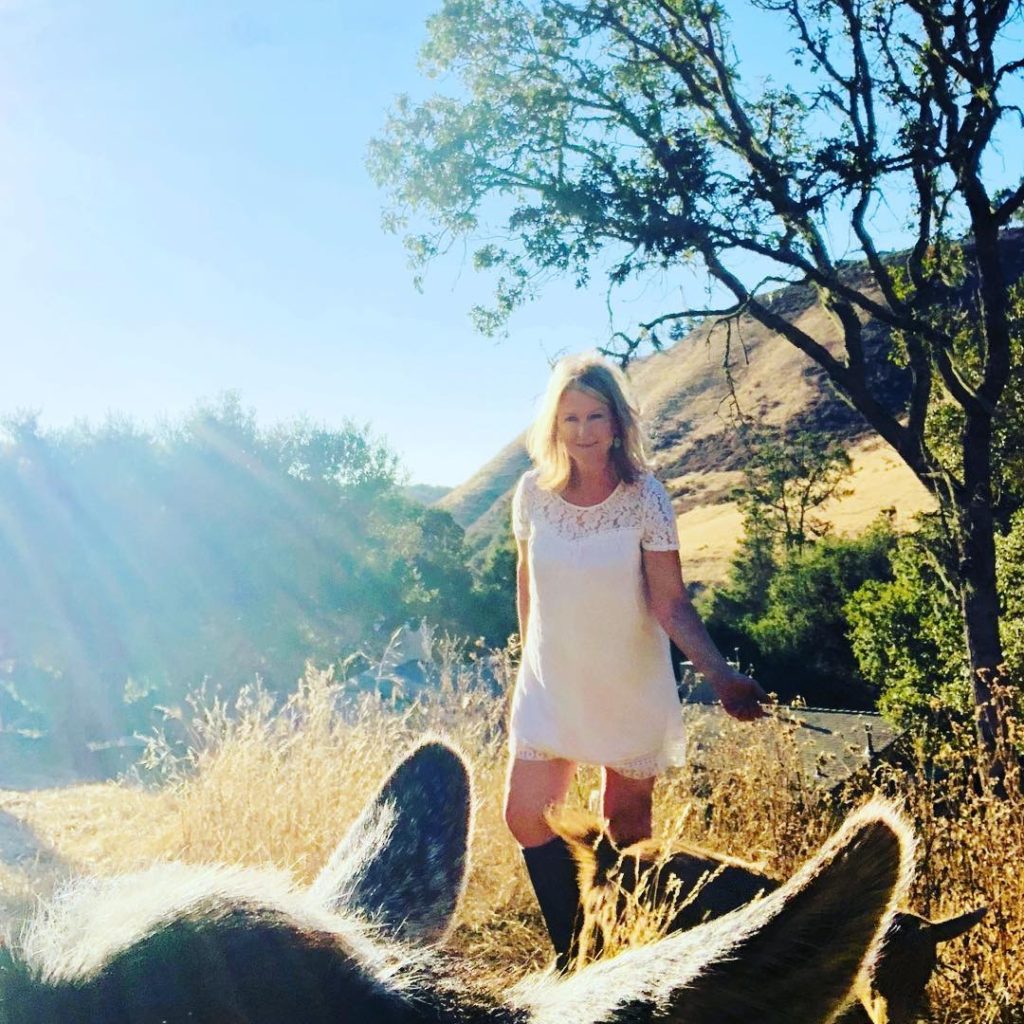
Goats, chickens and sunshine = happiness. Thank you for visiting my blog! Wishing you peace, love, happiness & beautiful vistas!
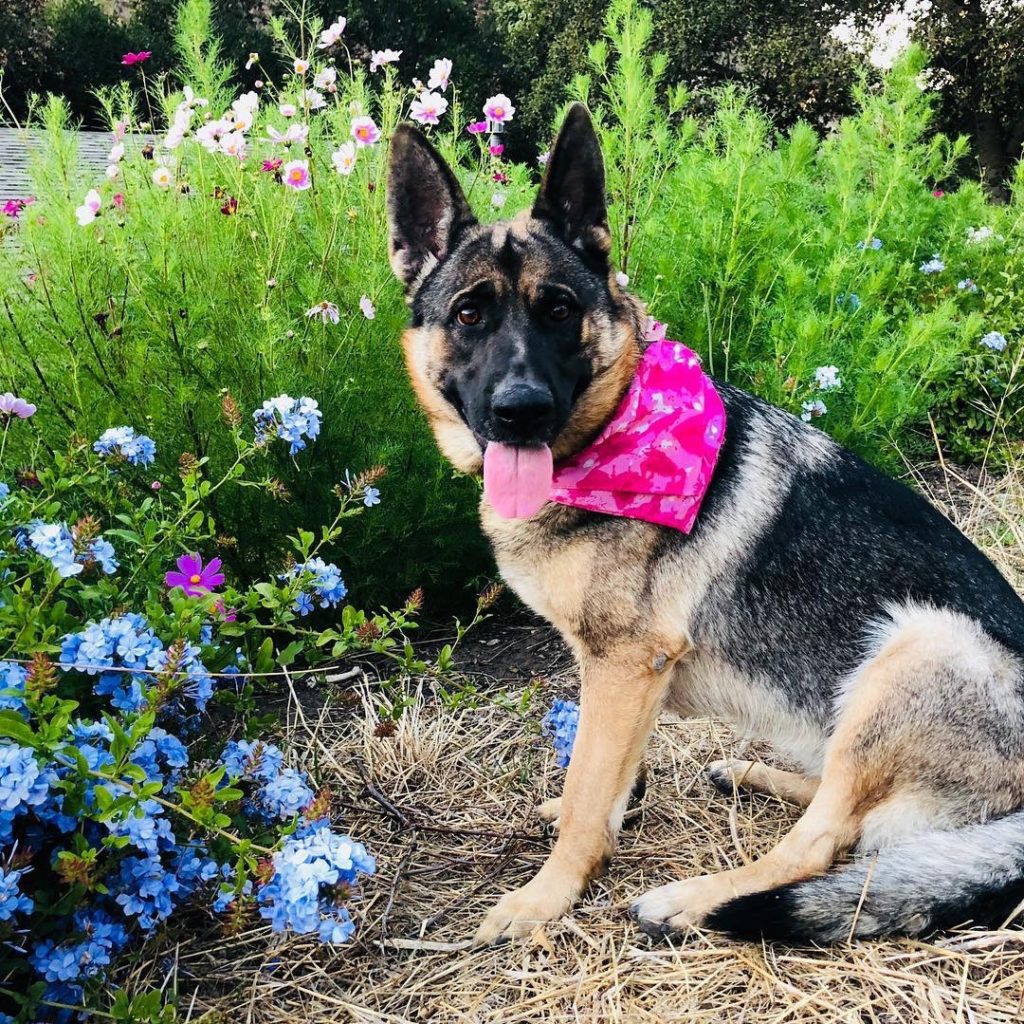
Sasha loves life in Corral de Tierra.